CAN 101 Glossary
Entries:
A) Acadia | The Aroostook War | Auto Pact of 1965
B) Bison| British North American Act
C) Canada Day| Canadian Arctic Archipelago | Canadian Association of Social Work | Canadian Pacific Railway | Canadian Shield | Cape Spear |Champlain | Leonard Cohen | Cree Indian History | Crown Land | Sidney Crosby
D) Tommy Douglas
E) Emigrant Female Workers
F)
G) Gaspé | Le Grand Dérangement | Grand Pré | The Great Acadian Expulsion | Wayne Gretzky
H) The Halifax Explosion | Haudenosaunee | Anne Hébert | The Hockey Sweater
I) Indian
J) James Bay | The James Bay Project | Michaelle Jean
K) King Philip’s War
L) Little Canada, ME | René Lévesque | Sir Wilfred Laurier
M) John Alexander Macdonald | The Maritimes and Atlantic Canada | Marshal McLuhan | Meech Lake Accord | Métis
N) The National Gallery | NATO | Niagara Falls | NORAD | The North West Trading Company | Nunavut
O) Ogdensburg Agreement | The October Crisis
P) Parlament Goes Down In Flames | Lester B. Pearson 1 | Lester B. Pearson 2 | Pont de Québec | Potlatch | Poutine | Prince Edward Island
Q) The Quebec Rock Slide | Quiet Revolution
R) Joseph Henri-Maurice “Rocket” Richards | Royal Canadian Mounted Police
S) Seigneurial System|St. Croix| The Seven Years War
T) Tom Thomson 1 | Tom Thomson 2 | Trans-Canada Highway | Pierre Trudeau
U) The U.S-Canada Border | United States-Canada Softwood Lumber Dispute
V)
W) Wabanaki | Hayley Wickenheiser
X)
Y)
z)
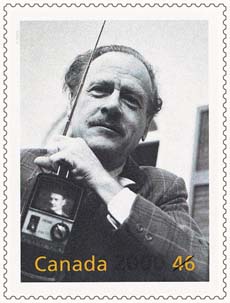
Marshall McLuhan was born in Edmonton, Alberta. His studies brought him to the University of Manitoba and Cambridge University where he obtained a Ph.D. in 1942. He taught at University of Wisconsin, St. Louis University, Assumption University ( Windsor , Ontario ), and at St. Michael’s College, University of Toronto. McLuhan was Director of the Project in Understanding New Media for the National Association of Educational Broadcasters and the U. S. Office of Education and later director of the Center for Culture and Technology at the University of Toronto. He was referred to as the “Oracle of the Electronic Age” and is perhaps best known for having said “the medium is the message.” His contribution to the field of communication study was widely acclaimed by the general public but simultaneously dismissed in some academic circles; he probably did more than any other individual to create interest in communication study. McLuhan was a master of wordplay and humorous quips: “I don’t necessarily agree with everything I say”. The title of his best-selling book The Medium is the Massage is a good example of this. The underlying notion is that the message is greatly impacted by the delivery system and illustrates his belief in technological determinism. He took the position that the print revolution begun by Gutenberg was the forerunner of the industrial revolution and that an unforeseen consequence was the fragmentation of society. Conversely, he saw electronic media as a return to collective ways of perceiving the world and proposed that it could serve to unify the human race. McLuhan did not live to see the merging of text and electronic mass media in a new media that is called the Internet. For more information:
http://www.marshallmcluhan.com/main.html
http://www.law.pitt.edu/hibbitts/mcl.htm
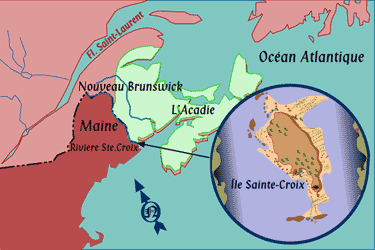
Saint Croix Island, also known as Dochet Island today, is a small uninhabited island located at the mouth of the Saint Croix river which forms the border between Canada and the United States. Pierre du Gua, sieur de Mons, was granted a monopoly on the fur trade in North America by king Francis I of France and settled the island in June of 1604. This settlement preceded Jamestown (1607) and Plymouth (1620) and was the first attempt by the French at year-round colonization in North America. Among the crew was Samuel de Champlain, a nobleman, cartographer and architect who would later found Québec City (1608). The little colony remained on the island only for one very cold winter that brought death to more than half of the crew who succumbed to scurvey. In the spring of 1605, de Mons moved his little settlement and trading post across the baie française
(Bay of Fundy) to a site that he named Port Royal.
For more information:
http://umaine.edu/canam/publications/maps/st-croix/champlain-and-the-settlement-of-acadia-1604-1607/
Samuel de Champlain (1567-1635)
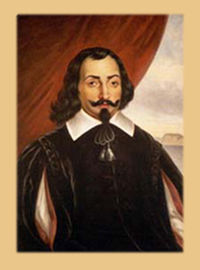
Samuel de Champlain is called the Father of New France. His role in the early development of colonial settlements in Acadia and Québec is significant. He participated in the first French settlement in North America: Saint Croix Island (1604-1607), founded Québec City (1608), established the preliminary defenses of New France , led expeditions against enemy Natives, the Iroquois in particular, and earned fame as an explorer. He named many geographic features of North America (Île du Mont Désert, Île au Haut, Rivière Sainte-Croix) and, of course, Lake Champlain was named after him. Champlain was also the Royal Geographer and a skilled mapmaker. A zealous Christian, he supported the push to evangelize the native peoples of North America. His commitment to New France is evidenced by his regular visits to France to rai se money for the colony and his explorations of the interior of the continent. His intensity resulted in an attempt on his life, capture, and imprisonment in England for three years. He returned to Québec City for the last time in 1632 and died there in 1635.
For more information:
http://www.samueldechamplain.com/
http://www.civilization.ca/vmnf/explor/champ_e1.html
http://www.loc.gov/exhibits/treasures/trr009.html
The Canadian (or Precambrian) Shield is the heart of Canada. Its harsh and rocky landscape of about 4.8 billion square kilometers covers much of Canada and parts of northern United States. It is rich in mineral deposits that were discovered by railroad engineers who had to blast through the thick rock to lay tracks. That rock is among the oldest in the world. Parts of the Canadian Shield rock are about
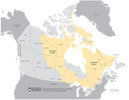
4600 million years old. In addition to the rich mineral resources, the vast softwood forests of the southern part of the shield are essential to Canada’s pulp and paper industry. The Canadian Shield is important to the Canadian economy and its importance is capital to Canadian identity.
The Halifax Explosion (Shane Walker, 2006)
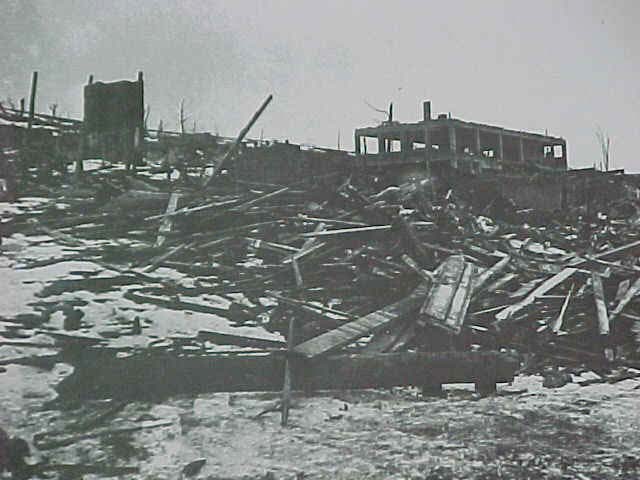 Halifax is a small harbor town on the eastern shore of Nova Scotia that was founded by the British military in 1749. Because of its location, the small port boomed in times of war because of its proximity to Europe. In 1917, Halifax had a population of 50,000 the largest city in Atlantic Canada. The harbor was extremely busy during World War I because it was a major supply link used by all kinds of ships. The rules for getting in and out of the harbor were quite basic: for ships to keep to the right in traffic and for pilots to signal their intentions. On the night of December 6, 1917, the transport ship, Mont-Blanc, loaded with an explosive mixture including
Halifax is a small harbor town on the eastern shore of Nova Scotia that was founded by the British military in 1749. Because of its location, the small port boomed in times of war because of its proximity to Europe. In 1917, Halifax had a population of 50,000 the largest city in Atlantic Canada. The harbor was extremely busy during World War I because it was a major supply link used by all kinds of ships. The rules for getting in and out of the harbor were quite basic: for ships to keep to the right in traffic and for pilots to signal their intentions. On the night of December 6, 1917, the transport ship, Mont-Blanc, loaded with an explosive mixture including 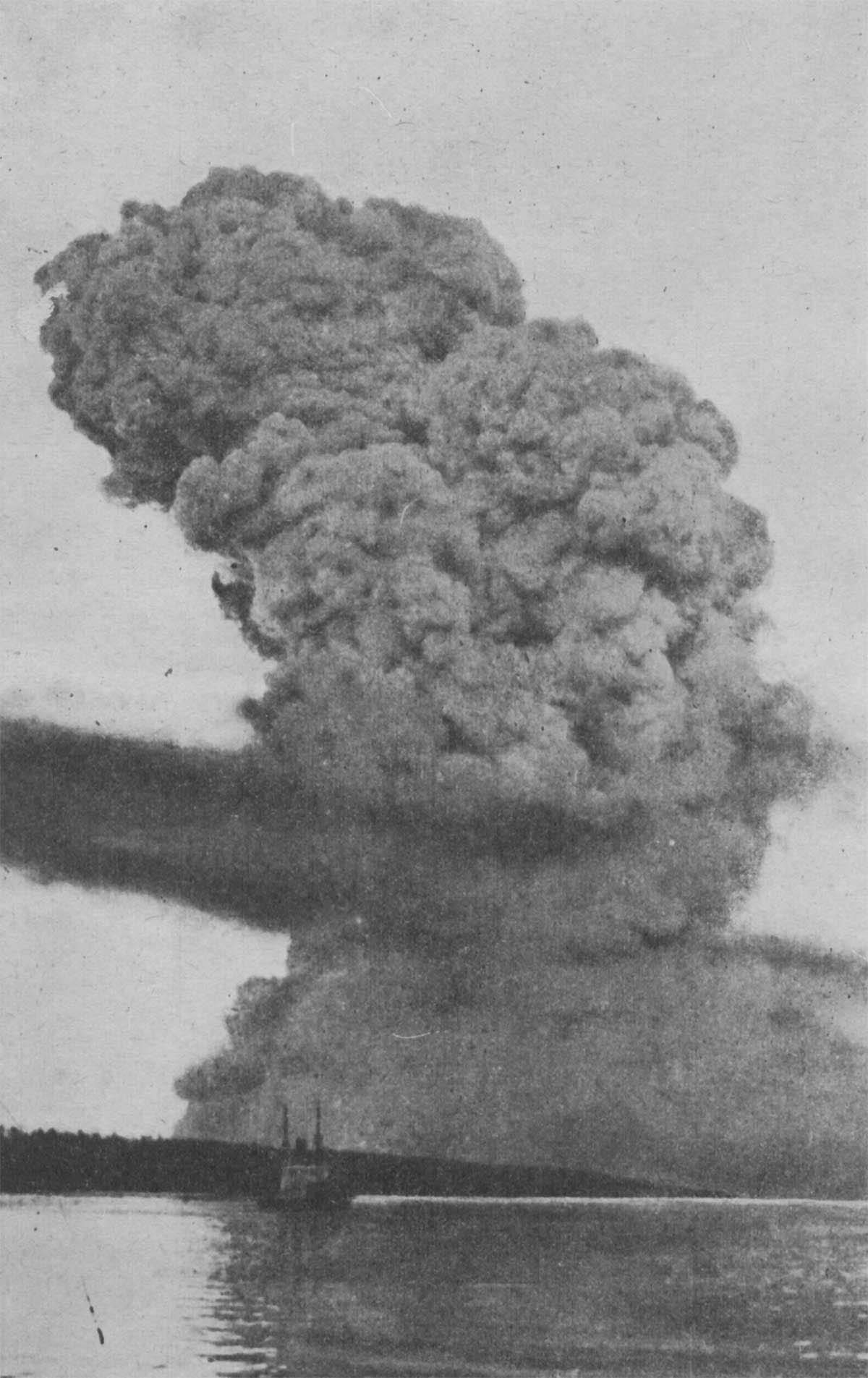 TNT, was hit by the relief vessel, Imo, which was coming out of the harbor. The fire that resulted created the largest manmade explosion before Hiroshima.
TNT, was hit by the relief vessel, Imo, which was coming out of the harbor. The fire that resulted created the largest manmade explosion before Hiroshima.
For More Information:
http://www.cbc.ca/halifaxexplosion/he1_promise/index.html
http://canadaonline.about.com/cs/canadaww1/p/halifaxexpl.htm
Parliament Goes Down in Flames (Ashley Janotta, 2006)
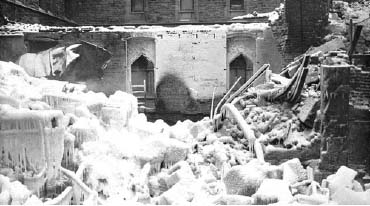
It was a cold night in Ottawa, Ontario on the 3rd of February, 1916. World War I was raging in Europe when the Canadian Parliament building caught fire. Everything but the Library went down in flames. Rumors spread fast that the cause was enemy sabotage, but
reports later concluded that it was just an accident. Nevertheless, this accident cost the lives of seven people. Fire safety within the building was inadequate. When it caught fire, there wasn’t much anyone could do but watch it crumble. The event was a major shock to Canadians and their identity. Government workers had to move into the Victoria Memorial Museum to continue their work. The rebuilding of the Parliament began quickly even though World War I was still going on. By February 26th 1920, members of Parliament took their seat in the new building that replaced the one that was destroyed four years earlier.
To find out more about the fire in the Parliament building go to:
http://canadaonline.about.com/od/parliament/p/parlbldgsfire.htm
http://www.parl.gc.ca/
http://www.parl.gc.ca/marleaumontpetit/DocumentViewer.aspx?Sec=ch06&Seq=3&Lang=E
http://archives.cbc.ca/IDC-1-70-2070-12870-10/on_this_day/disasters_tragedies/TWT
René Lévesque (Matthew Mulkern, 2006)
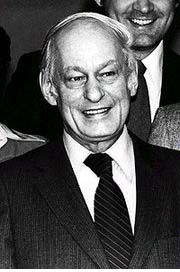
René Lévesque (Born August 24, 1922 in New Carlisle, Québec – Died November 1, 1987 in Île des Soeurs, Québec) was a reporter who later became involved in the government of Québec. Lévesque was the founder of the Parti Québécois, a political party whose platform included seeking independence for Québec. He was therefore the first French-Canadian political leader to try negotiating for the political independence of Québec. Lévesque was also the 23rd Premier of Québec (November 25, 1976 – October 3, 1985) and a recipient of the title Grand Officer of the French Legion of Honor.
René Lévesque studied for a law degree at Université Laval in Québec City, but left the university in 1943 before receiving his diploma. He worked as an announcer and news writer at the local radio station in New Carlisle during 1941 and 1942. From 1944 to 1945, he served as a contact officer and war correspondent for the U.S. Army in Europe while making regular journalistic reports for the media. He reported from London which was under regular attack by the Germans and he accompanied the Allied troops as they forced the Nazis back to Germany. After the war, Lévesque worked as a reporter in the international service office of CBC’s French Language department. He also served as a war correspondent for the CBC in 1952 during the Korean War.
From 1956 to 1959, René Lévesque ascended to fame in Québec while hosting a French language television news program on Radio-Canada called Point de Mire. In 1960, he entered politics and was immediately elected to the Legislative Assembly of Québec as a Liberal Party member. From 1960 to 1961, he served as Minister of Hydroelectric Resources and Public Works and from 1961 to 1965 he was Minister of Natural Resources. From 1965 to 1966, he served as Minister of Family and Welfare. During his time in office, he played a significant role in the nationalization of hydroelectric companies, such as Hydro-Québec.
On October 14, 1967, Lévesque left the Liberal Party after its members refused to discuss the idea of an independent Québec during its convention. He then joined with another sovereigntist party to create the Parti Québécois (PQ) in 1968. He remained leader of the PQ from 1968 until his resignation in 1985. After failing to win a spot in parliament in the 1970 and 1973 elections, he and his PQ’s won the 1976 election. René Lévesque became 23rd Premier of Québec soon after.
One of his and his parties’ most influential acts was the passage of the Québec Charter of the French Language, commonly know as “Bill 101”, whose objective was to make French “the normal and everyday language of work, instruction, communication, commerce and business.” The bill had many consequences. It kept access to English-language public schools to only children whose parents had attended an English school, forcing all other children, including the families of new Immigrants, to attend French schools. The charter also made it illegal for businesses to put up external commercial signs in a language other than French at a time when most of the commercial signs were in English.
As promised during the 1976 elections, the René Lévesque-led Parti Québécois held a provincial referendum on sovereignty and possible independence on May 20, 1980. The result of the vote was 40% in favor and 60% opposed. Lévesque reluctantly conceded defeat in the referendum, but during his concession speech he declared “À la prochaine fois!” (Until the next time). Coincidently another referendum was voted on long after René Lévesque’s death (the vote was October 30, 1995) with the vote 50.5% NO and 49.5% YES.
Lévesque led the PQ to victory again in the 1981 election, this time with a higher majority in the National Assembly of Québec and an increasing popular vote. However, a poor response by the PQ to the recession of the early 1980s annoyed many supporters of the PQ and the sovereignty movement. A split within the party over the emphasis on sovereignty in the next election led to Lévesque’s resignation as leader of the party on June 20, 1985. He argued that the PQ should not make sovereignty the object of the election, which angered its strongest supporters of sovereignty. Lévesque subsequently resigned as Premier of Québec on October 3, 1985.
René Lévesque, a heavy smoker during his lifetime, died of a massive heart attack on November 1, 1987 at the age of 65. 100,000 Québécois attended his funeral. Two major roads in Québec are named after him, one in Montreal and one in Québec City. A monument in his honor stands outside Parliament Building in Québec City. Also a statue of him stands in his hometown of New Carlisle, Québec. Even today, Lévesque remains an important figure of the Québec nationalist movement and is considered the spiritual father of Québec sovereignty. He is also regarded by some people as the father of the modern Québec nation.
As part of his legacy, he left: hydroelectricity through Hydro-Québec, the political party financing law, the Québec Charter of the French Language (Bill 101), protection of homosexuals in Québec’s Bill of Rights (“Charte des droits de la personne” 1977), creation of a welfare state and the creation of the Parti Québécois itself. Lévesque is considered a symbol of democracy and tolerance, and of the viability of the sovereigntist movement.
The Maritimes and Atlantic Canada (Virginia Sand, 2006)
The Maritimes, also called the Maritime provinces or the Canadian Maritimes, are located on the Atlantic coast of Eastern Canada. They comprise three provinces: Nova Scotia, New Brunswick, and Prince Edward Island. The Maritimes are positioned northeast of New England and Southeast of Québec’s Gaspé Peninsula. They are also southwest of Newfoundland-Labrador.
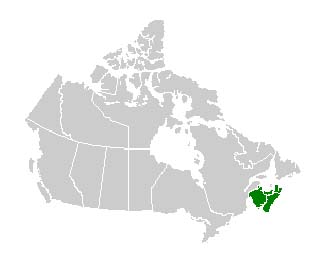
Atlantic Canada, also called the Atlantic provinces, refers to the Maritimes in addition to Newfoundland-Labrador: Nova Scotia, New Brunswick, Prince Edward Island, and Newfoundland-Labrador. The Gulf of Saint Lawrence geographically separates Newfoundland-Labrador from the Maritimes.
In 2004, the population in Atlantic Canada totaled 2.3 million.
In 2006, the population of the Maritimes totals 1.8 million, which is geographically distributed throughout the three provinces. Fishing, logging, farming, and coal mining have long been established in the regional economy. In addition, some of the coastal areas have developed major tourist centers: The Gulf of St. Lawrence and the Bay of Fundy coasts of New Brunswick, Prince Edward Island, the South Shore of Nova Scotia, and Cape Breton Island. Other significant economic resources include research-related spin-offs from the many universities and colleges in the Maritimes, information technology, pharmaceuticals, and insurance and financial sectors.
The people of the Canadian Maritimes represent cultures which include the Mi’kmaq Nation, Irish, Acadian (French descendants), Scottish, English, and the Maliseet Nation. There has been a more recent “Celtic revival” in Canada where many Maritime musicians and songs became popular.

Currently, the Maritimes are represented in the Canadian Parliament by 24 Senators and 25 Members of the House of Commons. Since this level of representation was established when the Maritimes had a larger proportion of the national population, the Maritimes are now over-represented in parliament.
Sources:
http://en.wikipedia.org/wiki/Maritimes
http://en.wikipedia.org/wiki/Atlantic_Canada

Originally the name « Acadia » referred to the colonies of New France, which included Prince Edward Island, southeastern Québec, New Brunswick, eastern Maine, and Nova Scotia. It was thought that the term “Acadia” came from the Greek word “Arcadia,” which means “rural contentment.” The region was thought to have been named by Verazanno who sailed near the maritimes in 1524. Early French settlers, who migrated from France to Acadia, were called “Acadians.” After the deportation, Acadians who settled in Louisiana became known as Cajuns. Acadia’s early settlers arrived in 1604. Great Britain claimed lands that included parts of what was called Acadia. As a result, it changed hands several times until 1713 when it became a British settlement and was renamed Nova Scotia. France retained l’Île Royale (today called Cape Breton) and eventually built the fort of Louisbourg. Pressure from immigrating Loyalists looking for arable land and the British need to assimilate the Acadians led to their deportation. The event, which started in 1755, is know as “Le Grand Derangement” in French. Some Acadians returned to Nova Scotia, but the bulk of them settled in what is now called Louisiana, New Brunswick, Prince Edward Island, and Québec.
The Acadian Flag was adopted in 1884. It is like the French tricolore and has a gold star called Stella Maris (Star of the Sea) at the top left. The star signifies the devotion to the Virgin Mary, the patron saint of the Acadians, and seeks her guidance and protection. This flag represents Acadians worldwide. It was officially recognized as a national flag by the Canadian Lieutenant-Governor.
Sources: http://www.grassroutes.com/clare/acadian.htm
http://www.crwflags.com/fotw/flags/ca-acad.html
The Québec Rockslide (Julie Corriveau, 2006)
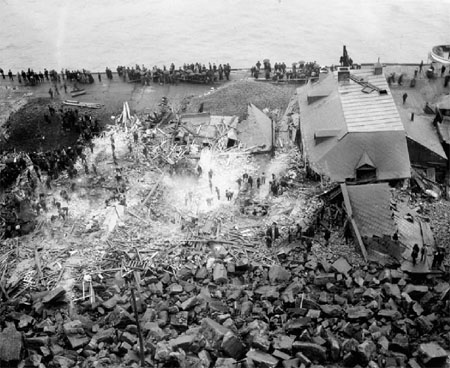
On September 18, 1889, a large piece of slate rock fell 300 feet onto 28 brick and stone houses burying about a hundred people under 80 feet of slate and debris in the Cap Diamant region of Québec City. 45 people were killed by the rock slide and many more were seriously injured. The disaster happened a day after a heavy rainfall that made the land above Cap Diamant unstable. Rescuers responded quickly since this was not the first rockslide to have struck Quebec City. One result of the 1889 rockslide was to leave the debris in place in order to support what remained of the cliff. The impact on the community was significant because of the number of people who were seriously injured, those who were out of jobs, those who were disabled, and because of the many children who lost their parents.
Sources:
http://www.collectionscanada.ca/sos/002028-2200-e.html
http://www.thecanadianencyclopedia.com/index.cfm?PgNm=TCETimelineBrowse&Params=A3CAT8
Niagara Falls (Julie Adams, 2006)
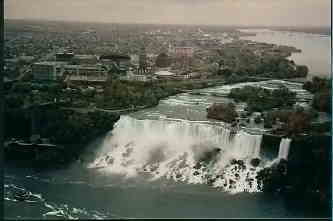
The Niagara Region of Canada is probably most well-known for one of its popular tourist spots, Niagara Falls. In fact, the falls have been a popular travel destination since the 1820s. There is a significant amount of history behind the formation of Niagara and the falls, beginning as early as 12,000 years ago. This was during the Palaeo-Indian Period, which ended about 9,000 years ago. The Clovis people—the first human beings to be in the Region—came to Niagara just as the Falls were “born”. The land consisted of a forest of spruce and tundra which was ideal for the nomads who lived in dwellings alongside the shoreline of Lake Erie. As time went on, the land’s formation changed. About 9,500 years ago during the Archaic Period, the southernmost part of Ontario was made up of a deciduous forest which supplied food sources such as fish, nuts, deer, moose, and plants. By the time the Iroquois arrived in the Woodland Period 3,000 years ago, food consisted mainly of vegetables such as corn, squash, and beans. Villages were settled with the construction of homes, burial practices developed, and a sense of kinship between friends and families grew. The arrival of Europeans in the 17th century and interactions with Iroquoian tribal confederacies (the Huron, the Petun, and the Neutral) proved harmful to them and the “inter-tribal warfare with the Five Nations of Iroquois of New York State” caused their dispersal. On the occasion of Jacques Cartier’s 1535 voyage, native Americans told him about Niagara Falls. While he never reached the falls, Samuel de Champlain , the founder of Québec City in 1608, sent an expedition to the falls. Etienne Brule was the first European to see the falls. A decade later, a Jesuit priest by the name of father Gabriel Lalemant named the Falls Onguiaahra which meant “the Strait”. Fifty years later, a Recollet priest named Louis Hennepin went to see Niagara Falls and wrote about them in a book entitled Nouvelle Découverte. Father Hennepin estimated that the falls measured 183 metres. The actual size of the falls was about 3 times smaller than Hennepin’s estimation.
In the late 1700s to the mid 1800s, transportation to Niagara Falls mostly by boat. After the War of 1812, the area began was rebuilt and by the 1820s ferry services were established across the river. A new system of roads brought tourism to the falls and by 1829, the first Welland Canal was constructed in Niagara and thirteen bridges were put up across the Niagara River Gorge. Four of these bridges still stand. In 1855, the Niagara Railway Suspension Bridge, the first of its kind, was built by Brooklyn Bridge designer John August Roebling. The city of Niagara was also one of the first places to have electric street cars, starting in 1893. This service transported boat passengers from Queenston to Table Rock until 1920, when another railway was developed and eventually expanded again later on. The Depression marked the end of the transit line as the development of cars, busses, and trains proved to be the demise of boat travel. After World War I, automobiles appeared in greater numbers and caused Niagara and to develop the tourist attractions that are still around today.
For More Information:
http://en.wikipedia.org/wiki/Niagara_Falls#Historical_background
http://www.infoniagara.com/other/history/index.html
Crown Land: (Joel Pepin, 2006)
Defined as Canadian land that is currently owned and operated by the crown, or by federal and provincial governments. The fathers of confederation thought they were giving the land to themselves as to earn the rights to natural resources worth valuable money. As time passed the crown land rights were more literally interpreted and were understood to be owned and operated by the provincial governments, not the federal government. Not all crown land is provincial however. 89% of Canada’s massive area is known to be crown land. About 41% of this land is controlled and operated by the federal government. Good examples of these areas would be the Northwest Territories and Nunavut, even though they are managed and operated by the territorial governments. 48% of crown land is owned and operated by provincial governments. These lands are a major source of income for the provinces, as nearly all natural resource extracted from these lands are by industries subject to crown land guidelines. Examples would be of Alberta’s right to the mining and extraction of oil in and around Edmonton. Similarly, the province of Quebec has strengthened its financial situation by building some of the most sophisticated hydro-electric that generate revenue from the electricity produced on crown land.
For further information:
http://en.wikipedia.org/wiki/Crownland#Canada
http://www.nrdc.org/land/forests/boreal/intro.asp
The Auto Pact of 1965 (Christopher Rodway, 2006)

For many years leading up to the Auto Pact of 1965, Canada had a sizable auto trade deficit with the United States. Many of the cars were manufactured in the United States, leaving Canada to continually increase its trade deficit. On January 16, 1965 the Canada-United States Automotive Agreement, commonly known as the Auto Pact, went into effect. This agreement stated that for every car purchased in the United States, a car must be produced in Canada. This effectively eliminated trade tariffs between the neighboring countries and allowed free trade to occur. As a result, the sales of vehicles sold in the United States that were made in Canada jumped from 7% in 1964 to nearly 60% in 1968. The agreement has been changed many times to reflect changing needs and business practices, but it remains the guiding principle of the automobile industry.
(Pictured above: Prime Minister Lester B. Pearson and President Lyndon B. Johnson signing the Canada-U.S. auto pact, January 15, 1965, at LBJ Ranch, Johnson City, Texas)
For more Information:
http://www.answers.com/topic/auto-pact
The Wabanaki of Maine are native peoples belonging to five tribes: the Abenaki, the Maliseet, the Mi’kmaq, the Passamaquoddy, and the Penobscot (note that there are many variations of spellings for these names). They are Algonquian speaking people of Eastern North America, living mostly in Maine, New Hampshire, Vermont, Quebec, and Atlantic Canada. Algonquian is thought to be derived from a Mi’kmaq word meaning “strait,” which refers to the narrow channel of the Saint Lawrence River near the city of Quebec while Wabanaki means “people of the dawn” or “dawn land people.” It must be noted that these tribes, although similar and often having overlapping hunting territories, are different and remain independent of each other in terms of culture, government, and dialects. However, they do maintain alliances with each other. Originally, they were bound together against the Iroquois. Before contact with the Europeans, a traditional yearly routine including getting together in larger groups and traveling downstream on major rivers such as the Penobscot, the Saint John, and the Saint Croix in the spring where they gathered plants and harvested seafood. Then, back upstream in the fall with their food, they divided anew into their smaller groups that covered large areas of land in the hunt for moose, deer, elk, and bear during the winter. Fishing was also another regular source of food, especially to the Passamaquoddy whose native name, Peskotomuhkat, means “pollock-spearer.”
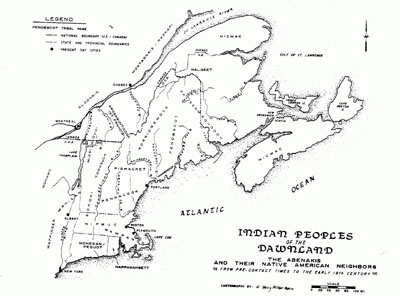
With the arrival of Europeans, the Wabanaki quickly made alliances with the French and hostilities developed toward the English. The warfare that resulted, however, was not the reason that many of their nations were decimated. European diseases like smallpox took 75% of their population and caused the tribes to bind together to help each other. During the American Revolution, the Wabanaki were still angry with the English and sided with the Americans. Following the war, they negotiated reservations on their native lands. Their territory, however, was located in parts of the United States and Canada, causing issues to arise at border crossings. The Jay Treaty of 1794 granted travel between Canada and the U.S.
Today the Wabanaki tribes represent a modern, vibrant culture whose members are committed to maintaining their rights and traditions. They have succeeded in many areas, including the passage of LD291, a bill requiring that native studies be included in the K-12 curricula of Maine schools.
For additional Information:
http://www.native-languages.org/wabanaki.htm
Sir Wilfred Laurier (Julian Burnett, 2006)

Sir Wilfred Laurier was born November 20, 1841 in Saint-Lin Quebec, the second child of Carolus Laurier and Marcelle Martineau. His father was a successful farmer and served as mayor and justice of the peace. His commitment to public service got the attention of his son and nurtured his interest in politics. Laurier attended McGill University and graduated in 1864. He practiced law in Montreal until 1866 when he became editor of Le Defricheur as a defender of liberal theories. From 1869 to 1878 he was an ensign in the Arthabaskaville Infantry. He eventually pursued his interest in government and became a member of the Liberal Party in 1871. He was leader of the party from 1887 to 1919, and served as the first francophone prime minister of Canada from 1897 to 1911. In that position, he worked on behalf of the creation of the Yukon in 1898, the construction of a second transcontinental railway in 1903, and the creation of the provinces of Saskatchewan and Alberta in 1905. Wilfred Laurier was knighted for his work as the “great conciliator.” He died on February 17, 1919 in Ottawa, Ontario. His grave can be found at Notre Dame Cemetery, Ottawa, Ontario.
For Additional Information:
http://www.collectionscanada.ca/primeministers/h4-3175-e.html
http://en.wikipedia.org/wiki/Wilfrid_Laurier
Trans-Canada Highway (Victor Doyle 2006)
 The Trans-Canada Highway navigates from east to west through Canada’s ten provinces. Introduced by the T-C Highway Act of 1948, it opened in 1962. Each province controls its section of the highway as opposed to being under the control of the federal government. The TCH is not a single road, but comprises two routes: the Trans Canada Route and the Yellowhead Route. Each crosses the country. There is no official starting point to the highway; however, St John, New Brunswick has claimed its section to be the start of the TCH system. The Trans-Canada Highway ends on the Pacific Coast, in Victoria, British Columbia and includes a 13km bridge that connects to Prince Edward Island to New Brunswick.
The Trans-Canada Highway navigates from east to west through Canada’s ten provinces. Introduced by the T-C Highway Act of 1948, it opened in 1962. Each province controls its section of the highway as opposed to being under the control of the federal government. The TCH is not a single road, but comprises two routes: the Trans Canada Route and the Yellowhead Route. Each crosses the country. There is no official starting point to the highway; however, St John, New Brunswick has claimed its section to be the start of the TCH system. The Trans-Canada Highway ends on the Pacific Coast, in Victoria, British Columbia and includes a 13km bridge that connects to Prince Edward Island to New Brunswick.
Tom Thomson (Nicole Lindsay, 2006)

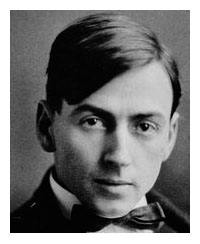
Thomas John Thomson was a famous and influential Canadian artist. He was born in 1877 in Ontario. He traveled through much of Canada during his youth. This experience became a major source of inspiration for his paintings. Thomson had no formal training in art, and taught himself the basics needed to create his works. He spent many years drawing and painting on his own and in 1912 began painting seriously. Most of Thomson’s work consists of naturalistic landscapes which are first created by sketching then employing oil paints. Among his most popular works are: “The Jack Pine,” “Northern River,” and “The West Wind.” Thomson created hundreds of major works, many of which can be found in the Art Gallery of Ontario and the National Gallery of Canada. He is considered an influence on and is associated with the Group of Seven, a group of well-known Canadian landscape painters. Tom Thomson died mysteriously in 1917.
Sources:
http://en.wikipedia.org/wiki/Tom_Thomson
Poutine is a French Canadian dish made of French fries, cheddar cheese curds and smothered in hot gravy. It is important to note that French Canadians use cheese curds, not cheese slices or shredded cheese such as is commonly found in grocery stores in the United States. There are many variations of poutine, such as Italian poutine which consists of using tomato sauce in place of gravy. The history of poutine is somewhat vague since multiple people claim the title of “Poutine Inventor.” Ferdinand LaChance claims to have invented poutine in 1957 in his restaurant called Lutin Qui Rit. Another gentleman by the name of Jean-Paul Roy, owner of Roy le Jucep, claims the title saying that poutine had not been around until he invented it in 1964 when it officially appeared on his menu. He says that the idea came to him as he noticed clients dipping their cheese curds in the gravy/sauce concoction that he served. To this day there is no clear evidence as to who is officially responsible for the invention of poutine.

The dish is primarily sold in Canada but can be found in some parts of northern United States. In Canada, poutine has become so popular that it is even sold in fast food restaurants such as McDonalds.
Reference Websites
http://montrealpoutine.com/history.html
http://en.wikipedia.org/wiki/Poutine
http://galactic-guide.com/articles/2R119.html
United States-Canada softwood lumber dispute (Bryan Pierce, 2006)
The United States and Canada have been trading lumber for many years and still do today. The dispute over softwood lumber is one of the most significant and enduring trade disputes between the two countries. The heart of the dispute is the claim that the Canadian lumber industry is unfairly subsidized by the federal and provincial governments of Canada; specifically most of the timber in Canada is owned by provincial governments. The price charged to harvest the timber, also known as the “stumpage fee,” is set administratively rather than through a competitive auction, as is often the practice in the United States. The U.S. claims that the provision of selling government timber at below market prices constitutes an unfair subsidy. Under U.S. trade remedy laws, foreign goods benefiting from subsidies can be subject to a countervailing duty tariff to offset the subsidy, thereby bringing the price of the product back up to market rates. The Canadian government disputes the assertion that its timber is subsidized. It claims that the timber is provided to so many industries that it cannot be considered sufficiently specific to be a subsidy under U.S. law. Under U.S. trade remedy law, for a subsidy to be countervailing, it must be specific to a particular industry. This requirement precludes imposition of countervailing duties on government programs, such as roads, that are meant to benefit a broad array of interests. This dispute dates back to 1982, and since then there have been four major iterations of the dispute. This year, the United States and Canada came to an agreement that provides Canadian producers unrestricted access to U.S. markets under current market conditions, which means that there is no overall cap on the Canadian share of the U.S. market. Considering the current market prices, no quotas or tariffs are applied. However, if prices drop, certain export restrictions will kick in causing producers to pay an export tax of five percent. If prices continue to drop, the export tax could increase to as much as 15 percent.
Links:
http://www.cbc.ca/world/story/2006/04/27/softwood060427.html
http://en.wikipedia.org/wiki/United_States-Canada_softwood_lumber_dispute
Wayne Gretzky (Jennifer McCurry, 2006)

Wayne Gretzky was born on January 26, 1961 in Brantford, Ontario. He was seen as a hockey prodigy at the age of 10 when he scored 378 goals and assisted on 139 others in just 85 games. His NHL career started at the young age of 17. His talent and skills earned him the title of “the greatest hockey player ever.” He helped several teams win the Stanley cup and the list of his trophies and awards are legend. Gretzky tallied over 100 points a season in 15 NHL seasons. He retired in 1999 and was immediately inducted into the Hockey Hall of Fame on November 22, 1999. He was the tenth and last player to bypass the three-year waiting period.
Additional Websites
www.hockey-fans.com/players/gretzky.php
Royal Canadian Mounted Police (Matt Olson, 2006)
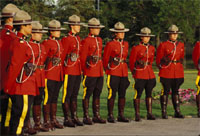
The Royal Canadian Mounted Police began service in 1873 during John A. Macdonald’s term as prime minister of Canada. Their purpose was to serve and protect modern day Alberta, Nunavut, and Saskatchewan. The Mounties were a relatively small police force until in 1920 when they were given the responsibility for all federal law enforcement in all territories and provinces. Today, they are the largest police force in Canada, serving in most of the provinces and territories except Ontario, Quebec and regions of Newfoundland and Labrador that have their own police units.
The role of the Mounties is varied, ranging from policing small, rural, isolated towns to protecting the prime minister. In addition to keeping Canada safe, they have played important roles in World War I and World War II. Their red ceremonial uniforms are internationally recognized and have been a major artifact of Canadian culture. The Mounties are and will continue to be a large part of the Canadian tradition.
Sources
http://www.rcmp-grc.gc.ca/ Canadian government web site
Joseph-Henri-Maurice “Rocket” Richard (Joshua Moody, 2006)
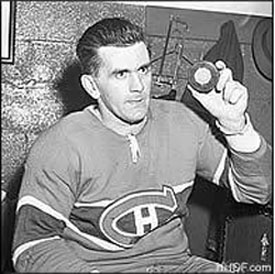
Joseph-Henri-Maurice Richard, better known as “Rocket” Richard, was born in Laval, Quebec, Canada on August 4th 1921. He is regarded as one of the Canada’s best hockey players. He played for the Montreal Canadians from 1941 to 1960 and once scored 50 goals in 50 games, which is seen as one of the most prolific achievements in the sport. Richard was also the first player to score 500 goals in a career; he retired from hockey with 544 goals to his credit. His team won nine Stanley Cup championships and the “Rocket” was named to play in the all star game 11 times. Richard wore number 15 playing for the Canadians, but then changed to number 9 later in his career. The team retired his number in 1972. Hockey News magazine ranks Richard as the 5th best player in the game. His death on May 27th, 2000 after a long battle with cancer was considered a national day of mourning in his native Québec. He was 78.
For more information:
http://en.wikipedia.org/wiki/Maurice_Richard
http://franco.ca/edimage/grandspersonnages/en/carte_r05.html
The Aroostook War (Adam Eldridge, 2006)
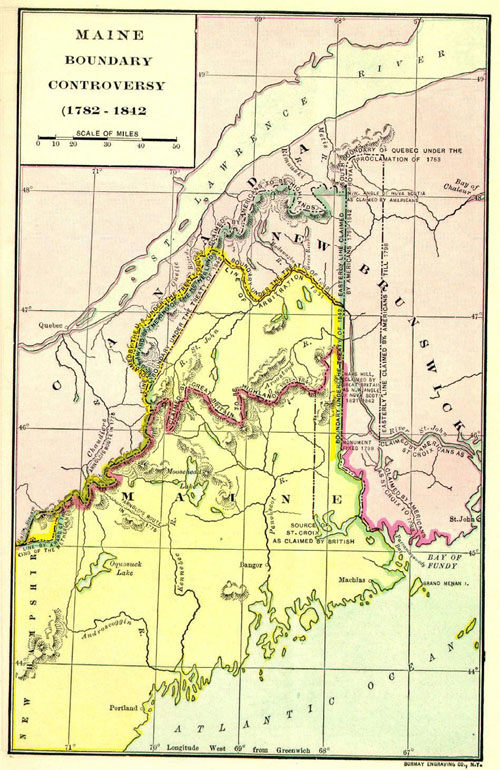
The Aroostook War was a border dispute between the United States and Great Britain over territory that is currently in the state of Maine and the province of New Brunswick. The dispute was a bloodless, undeclared war that occurred in 1838-39. In 1783, the Treaty of Paris failed to determine the boundary in that region. British residents of this borderless region worked as lumberjacks in the winter and would live on land that Americans considered U.S. property. American woodsmen were sent to move the British back to where the U.S. thought the border should be. In response, the British loggers seized the American land agent; the event started the “war.” The two sides sent 50,000 men and spent $10 million to resolve the border issue. The settlement negotiated by Daniel Webster and Lord Ashburton granted the United States 7,015 sq miles while Great Britain received 5,012 sq miles. The U.S. government also agreed to pay to Maine and Massachusetts $150,000 each for their expenses in resolving this issue.
Lester B. Pearson (Matthew Zetterman)
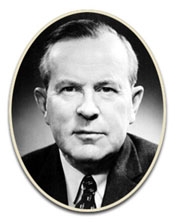
Lester Pearson, the 14th prime minister of Canada, was born in Toronto, Ontario (formerly known as Newton Brook) on April 23, 1887. He graduated from the University of Toronto in 1919 and eventually devoted himself to public service in Canada’s Foreign Service, as a delegate to the newly-formed United Nations, and as Prime Minister. In 1957, Lester Pearson received the Nobel Peace Prize for his efforts in the Suez Canal crisis that had erupted in 1956. Egypt had wrested control of the Suez Canal from the British by blocking the trade route for several countries, including Great Britain, France and Israel. Prime Minister Pearson organized the United Nations peacekeeping force that was essential to resolving the issue. In 1963, as leader of the Liberal Party, he became Prime Minister. During his five years as PM, he made several important contributions to Canadian public policy. First, he worked for the passage of the Medical Care Act which was the final step in providing universal health care in all provinces. He then moved the adoption of the red maple leaf flag as the symbol of Canada, a change that was very unpopular among British loyalists. His other accomplishments include the passage of a national labor code, a system of interest free loans, and the Canada-United States Automotive Agreement which created thousands of jobs in Canada. His accomplishments have played a large role in shaping Canada into the country it is today.
Sources:
http://www.cbc.ca/
http://www.biographi.ca/EN/ShowBio.asp?BioId=42123
British North America Act (Kimberly Preble, 2006)
The British North America Act (BNA) of 1867 was established on July 1st. It essentially recognized Canada as a self governing country. Henceforth, Canada could make and establish its own laws as well as establish its own government, but still required the approval of the British Parliament. The BNA Act of 1867 defines the operation of the Canadian government by outlining a federal structure consisting of a House of Commons, a Senate, a justice system and a taxation system. The power of the federal government was greater than that of the United States but the provinces were given the authority to make laws governing provincial lands, hospitals and other institutions, property and civil rights, provincial corporations, licensing and taxation, the administration of justice (prisons and reformatories), and the solemnization and annulment of marriage. The federal government had the power to act on issues of peace, order, and good government. Member of the House of Commons would be elected by the people while the Governor General in council appointed senators. John A. MacDonald became the first prime minister under the BNA Act of 1867. Canada did not gain full legislative sovereignty from Great Britain until the passing of the Statute of Westminster in 1913. Canada later patriated its constitution in 1982 with the passing of the Canada Act.
Gaspé is a city, a peninsula, and a bay located in the Québec province of Canada. The city of Gaspé has a population of 16,517 in 1996 and is located on the bay bearing the same name. The name, Gaspé, also extends to an entire region known as the Gaspé Peninsula, or Gaspésie. The city of Gaspé is now one of Québec’s largest municipalities in area following the merging of twelve neighboring localities between Anse-à-Valleau and Pointe-St-Pierre in 1971.
The Mi’kmaq Indians who occupied the Gaspé peninsula when the first Europeans arrived, called it “Gespeg,” which means “the place where the land ends.” The Mi’kmaq who inhabited the peninsula are sometimes called “the Indians of the Sea” and were noted for their fishing skills and their distinctive birch bark canoes that were capable of crossing open water. The Gaspé peninsula is surrounded by the Saint Lawrence River, the Gulf of Saint Lawrence, and Chaleur Bay. The Gaspesian Mi’kmaq were the first documented Native Americans in the area to make contact with Europeans. When Jacques Cartier sailed into the Baie de Gaspé in 1534, he was greeted by Mi’kmaq people waving beaver furs and speaking in pidgin Basque. They had apparently experienced contact with Europeans prior to Jacques Cartier’s visit.
The city of Gaspé is one of the oldest settlements in North America. On July 24, 1534, Jacques Cartier officially took possession of Canada on behalf of the king of France and placed a cross at this location. It quickly became a fishing port and supply center for New France. Gaspé was the site of several incidents between the English and the French between 1628 and 1760. English troops burned the village in 1690 and built a fort there just before the Conquest. Following the American Revolution, many loyalists settled the area. Since that time, however, the population of Gaspé has been mostly francophone.
Cod and salmon fishing dominated the economy for many years, but today forestry, trade, and tourism play a large role. In 1976, a regional history and folklore museum opened, and a nearby monument commemorates the arrival of Cartier. Also, Forillon National Park was established across the Baie de Gaspé.
REFERENCES: The Canadian Encyclopedia by McClelland & Steward, 2000 Edition
http://www.great-adventures.com/destinations/canada/gaspe.html
Map of Québec by JDM Géo Inc., MAPMedia Corp. Edition 2002; www.mapart.com
Canadian Association of Social Work (Amanda Vogt, 2006)
The Canadian Association of Social Workers represents all of Canada’s professional social workers. It began in 1926 to help monitor employment and create standards for practice in social work. The association has a board of directors that oversees social workers and that is in charge of financial policies. Every province/territory organization has one member in the board. This helps assure that many Canadians are heard. The board of directors works on both national and international levels for the benefit of the social work profession.
The CASW is also involved with the International Federation of Social Workers, which provides leadership within the North American Region. Canada is well recognized within the International Federation in matters of social justice and social advocacy. Nationally, Canada has been pro-active in its approach to social policy.
The CASW has three main goals: to advance social justice, to strengthen and promote the social work profession, and to support the regulatory and non-regulatory work of member organizations. The board and its members created a Code of Ethics that every professional social worker must follow.
Michaelle Jean (Ashley Janotta. 2006)
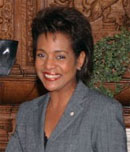
Michaelle Jean was born on September 6, 1957, in Port-au-Prince, Haiti. She was named Governor General of Canada by Queen Elizabeth II in 2005 and was recommended by Prime Minister Paul Martin. Mrs. Jean replaced Adrienne Clarkson and became the 27th Governor General of Canada since confederation in 1867. As the current Governor General, she is entitled to be addressed as her Excellency while in office. She also is entitled to be addressed as Right Honourable for life. She will be sworn into the Queen’s Privy Council for Canada when her term as the Queen’s representative has ended. An announcement of her appointment was made on August 4, 2005 and her investiture started on September 27. Before being named Governor General, Michaelle Jean was a journalist and broadcaster on Radio-Canada and the CBC. She is the first person of Afro-Caribbean heritage, the second immigrant and the third woman to have served as Governor General.
To learn more about Michaelle Jean go to:
http://en.wikipedia.org/wiki/Micha%C3%ABlle_Jean
http://www.cbc.ca/canada/story/2005/08/03/gg050803.html
Pierre Elliott Trudeau (Ashley Janotta, 2006)

Pierre Elliott Trudeau was born on October 18, 1919. He became the fifteenth Prime Minister of Canada, serving from April 20, 1968 to June 4, 1979 and from March 3, 1980 to June 30, 1984. Mr. Trudeau was a compelling figure who dominated the Canadian political scene from the late 1960’s to the mid 80’s. “He haunts us still,” says Christina McCall and Stephen Clarkson, his biographers. Admirers praised his intelligence and saluted his political brilliance. He is responsible for bringing the Charter of Rights and Freedoms into the Government and for unifying the nation. Some feel that Trudeau had poor administrative practices, that he was arrogant, and that he didn’t understand Canada outside of Quebec. His economic policies increased the national debt and he was criticized for increasing the sense of political alienation in western provinces. These detractors are few and far apart, however. Most people would say that Trudeau was the towering figure who redefined Canada and who led his country through some of the most chaotic times in its history. He was known for his flamboyance; he dated celebrities and sometimes wore sandals or a buckskin jacket in the House of Commons. He was also known to use obscenities during debates and it is rumored that he once did a pirouette behind Queen Elizabeth II. He was a great man who helped define Canada. Having patriated the Charter of Rights, he allowed Canada to truly became its own nation. He died on September 28, 2000, but his presence still haunts the people of Canada.
To learn more about Pierre Trudeau go to:
http://en.wikipedia.org/wiki/Pierre_Trudeau
http://www.collectionscanada.ca/primeministers/h4-3375-e.html
John Alexander Macdonald (Ashley Janotta)

John A. Macdonald was the first Prime Minister of Canada, serving from July 1, 1867 to November 5, 1873 and again from October 17, 1878 to June 6, 1891. He was born on January 11, 1815 in Glasgow, Scotland. His parents were Hugh Macdonald, a merchant of questionable success in Scotland, and his wife, Helen, whom he met in 1811. A business failure led the elder MacDonald to move with his family to Kingston, Upper Canada in 1820. The family emigrated with many others who were seeking affordable land and promises of prosperity. Indeed, Hugh MacDonald found success there and his son was educated in the finest schools. The latter became a lawyer in 1834 and set up a law practice in Kingston. He married his half second cousin, Isabella Clark; they had two children: John Alexander, who died at 13 month old, and Hugh John, who was raised by Margaret, Macdonald’s sister. Isabella died in 1857 and their son Hugh John went on to become the premier of Manitoba. Ten years later at the age of 52, Macdonald married Susan Agnes Bernard. John A. Macdonald’s greatest legacy was to become one of the Fathers of the Canadian Confederation, a role that defined the path that his nation follows today.
To learn more about John Alexander Macdonald go to:
http://en.wikipedia.org/wiki/John_A._Macdonald
http://www.macdonald.egate.net/sirjohn/sir.html
http://www.collectionscanada.ca/primeministers/h4-3025-e.html
http://www3.sympatico.ca/goweezer/canada/macdonald.htm
Meech Lake Accord (Julie Corriveau, 2006)
The Meech Lake Accord of 1987 was an attempt to recognize Québec as a “distinct society” within Canada. The amendments negotiated at Meech Lake would have changed the newly repatriated constitution for that very purpose. The principle negotiators of the Québec question were the leader of Canada’s Progressive Conservative government, Prime Minister Brian Mulroney and the leader of Québec’s Liberal government, Premier Robert Bourassa. The agreement contained other provisions that many provinces wanted to be adopted: the restoration of Constitutional Veto, an increase in provincial power, provincial opinion in appointing Supreme Court judges, for example. Several representatives, however, had reservations about the “distinct society” provision and public opinion drifted away from the agreement within a couple of years (1987-1990) until Newfoundland and Manitoba refused to approve it, making ratification impossible. The failure of the amendment kept alive the Québec separatist movement.
http://www.mta.ca/faculty/arts/canadian_studies/
http://en.wikipedia.org/wiki/Meech_Lake_Accord
Canadian Arctic Archipelago (Ross Myers, 2006)

The Canadian Arctic Archipelago, also known as the Arctic Archipelago, is a cluster of islands north of the Canadian mainland in the Artic region. It covers about 1,424,500 km and contains 36,563 islands, including three of the world’s ten largest islands. These comprise much of the territory of Northern Canada, most of Nunavut and part of the Northwest Territories.
Besides Greenland, the archipelago is the world’s largest high-arctic land area. The islands have an arctic climate and their terrain consists of tundra except in the mountainous regions. Most of the islands are uninhabited. Human settlements are small and spread out; Inuit settlements are found mostly on the southern islands.
Emigrant Female Workers (Shannon Trahan, 2006)
A large number of French-Canadians immigrated to the United States from 1865 to 1930. Most left Canada to earn enough money as fast as possible to pay off debts and to their return native land to start a new life. However, large numbers ended up staying in the United States rather than returning to Canada. Single women were among the first wave to head south to northeastern United States. They were particularly sought after for work in the textile industry. Unmarried women worked full days and many would only stop working when they were married if heir spouse wanted them to stay at home.
Generally, however, married women worked as well and actually sent their children to work in the mills and factories as well at a very early age. In some cases, families lied about their children’s ages so that they could begin working sooner. The wages were low and the hours were long, the working conditions were hazardous as equipment failures resulted in lost limbs, the noise level was such that it would affect the hearing of many, and the environment was unsanitary; diseases would spread unchecked through the mill. At the end of every day, the money earned by each member of the household would go directly to sustaining the family and its needs.
For additional information:
http://dll.umaine.edu/historytrail/site37.html
Cree Indian History (Samuel Sayen, 2007)
The Cree are an important Algonquian tribe of British America whose former habitat was in Manitoba and Assiniboin, between the Red and Saskatchewan Rivers . They ranged northeastward down the Nelson River to the vicinity of Hudson Bay and northwestward almost to Athabasca Lake . When they first became known to the Jesuit missionaries, a portion of the group resided in the James Bay region as stated in the Jesuit Relations of 1640: “… they dwell on the rivers of the north sea where Nipissing go to trade with them”. The Jesuit Relations of 1661 and 1667 also indicate a region farther to the northwest as the home of a larger part of the tribe. A portion of the Cree inhabited for a time the Red River region. They were intermingled with the Chippewa and Maskegon, but were attracted to the plains by the buffalo. Like the Chippewa, they became essentially a forest people and are closely related to the latter linguistically and otherwise. Many bands of Cree were virtually nomads, their movements being governed largely by the food supply.
As they became friendly with both the English and the French, they were left relatively undisturbed in their territory and very little of their history has been recorded. The exceptions are their contests with neighboring tribes and their relations with the Hudson Bay Co. In 1776, the population of the Cree was estimated at about 15,000. In 1786, they were reduced to less than half their former numbers by smallpox. The same disease once again ravaged the prairie tribes in 1838, thereby reducing the Cree population to one-sixth or one-eighth of their numbers. Since that time, they have lived chiefly in scattered bands and depended largely on trade with the agents of the Hudson Bay Co. Presently, there are now about 10,000 Cree who live on reserves in Manitoba and about 5,000 in the Northwest Territory .
For additional information, visit: http://www.accessgenealogy.com/native/tribes/cree/creehist.htm
Pont de Québec – “Bridge of Québec” (Jason Withee, 2007)
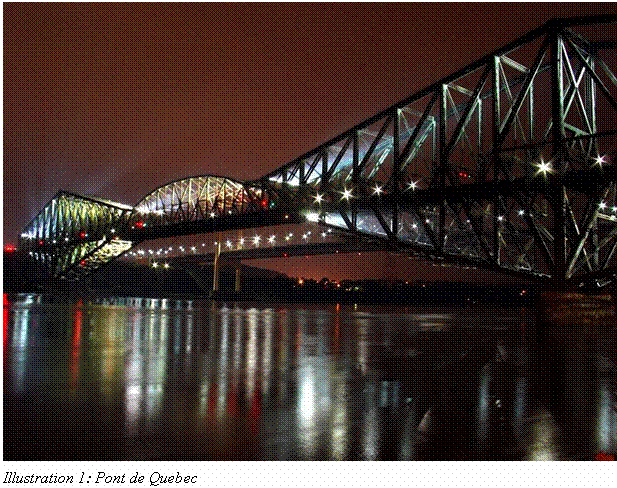
Until the early 1900’s, the only way to cross the St. Lawrence River from Québec to Lévis was by ferry or the “ice bridge” in the winter. Obviously this was not sufficient especially with the growing transcontinental railway and exportation of goods. To solve this problem, the Québec Bridge and Railway Company built the Pont de Québec across the St. Lawrence River, just west of Québec City.
The Pont de Québec is the world’s longest cantilever bridge, having a single central span of more than 1/3 of a mile (1,800′) across the St. Lawrence River and a total length of 2,800 feet, or a little more than half a mile. The bridge was designed and built by the Phoenix Bridge company of Pennsylvania with the help of a New York bridge builder, Theodore Cooper. Construction started in 1905 when the first steel girders were bolted into place. The original calculations for the weight of the bridge were off by more than 8 million pounds. During construction the local engineering team noticed the beams had been bent due to the excess load, but the head engineer, Theodore Cooper, did not feel this was a problem and that the miscalculation was minor and within engineering tolerance. Unfortunately, he was wrong, and on August 29, 1907 the south arm and the central section of the bridge collapsed into the river killing 76 of the workers and injuring 10 more.
After an investigation of the collapse, work resumed in 1913 and the bridge was completed in August of 1919, but not without another accident. In September of 1916 the central span fell into the river while being raised into position, killing 13 more workers. The structure included two railway lanes, two tramcar lanes, and two lanes for motor vehicle traffic. It is considered a great engineering feat, but its construction had cost of $25 million and taken 86 lives over a span of almost 20 years.
For more information on the Pont de Québec:
http://thecanadianencyclopedia.com/index.cfm?PgNm=TCE&Params=A1ARTA0000985
http://www.civeng.carleton.ca/Exhibits/Quebec_Bridge/intro.html
Images from:
Illustration 2: http://www.civeng.carleton.ca/Exhibits/Quebec_Bridge/images/p6.gif
Illustration 1: http://en.wikipedia.org/wiki/Image:Quebec_Bridge_-_Pont_de_Qu%C3%A9bec.jpg
Hayley Wickenheiser (Jennifer Gallo, 2007)
Hayley Wickenseiser is a female Canadian hockey player. She was born August 12, 1978 in Shaunavon, Saskatchewan. Her first goal was to make the Canadian National Team, which she achieved at the age of 15. She then brought home her first silver medal from the 1998 Winter Olympic Games and subsequently won four gold medals at the IIHF World Champions. Hayley also led Team Canada to three Olympic Gold Medal titles.
As a young adult, she made history on January 11, 2003 by being the first women to compete and score a goal in a professional hockey league. Hayley has devoted her life to Canada’s national game and will continue to inspire teens and young women of Canada.
James Bay (Sean Campbell, 2007)
James Bay is a large body of water at the southern end of Hudson Bay. It measures 333,255km squared. It is located in northeastern Canada with its eastern shore in the province of Quebec and the western shore in the province of Ontario. The eastern shore town of Radisson can only be reached by a 620km road. The region houses the Bay James complex a hydro electric power generation system called La Grande Complex.
In the 1960’s plans for hydroelectric damming were developed without consulting the native populations who inhabited the lands to be flooded. The project was opposed by the Cree and Inuit peoples who sued Hydro Québec and had the project halted until negotiations could be concluded.
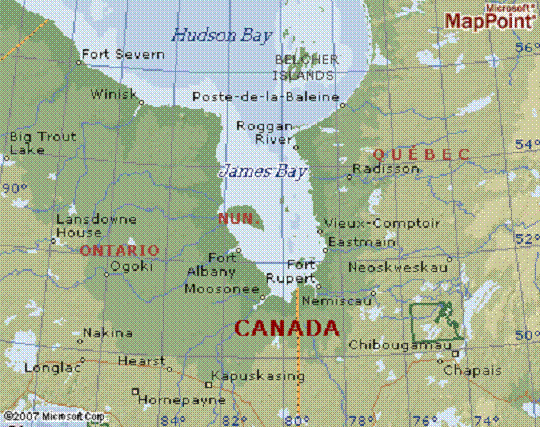
http://archives.cbc.ca/IDD-1-69-94/life_society/james_bay/
http://en.wikipedia.org/wiki/James_Bay_and_Northern_Quebec_Agreement
The North West Trading Company (Martin Hrynick, 2007)
The North West Company was a cooperative of fur traders and merchants which sought to bring furs from inland British North America to Montreal. The company was founded in Montreal in 1779, with such well known traders as Peter Pond, Simon McTavish, and the Frobisher brothers.
The North West Company was the primary competition to the Hudson’s Bay Company for dominance in the British North American fur trade. However, the North West Company had major obstacles: the journey from Montreal to good fur territory took more than one season which required a difficult two staged transportation method, in which canoes from Montreal would meet the canoes from fur territory at Fort William in what is know called Thunder Bay. At the Fort, there would be a wild party for several days in celebration.
Additionally, relations between the North West Trading Company and the Hudson’s Bay Company became increasingly violent, and both groups also found themselves embroiled in legal disputes. The violence culminated in a battle in Manitoba in 1816, which resulted in the death of twenty-two traders. In 1821, violence and government pressure necessitated the absorption of the North West Company into the Hudson’s Bay Company.
For Further Reading:
http://faculty.marianopolis.edu/c.belanger/quebechistory/encyclopedia/northwestcompany.htm
http://www.collectionscanada.ca/2/24/h24-1601-e.html
http://en.wikipedia.org/wiki/North_West_Company
Leonard Cohen (Martin Hrynick, 2007)
Leonard Cohen was born on 21 September 1934 in Montreal, to a Jewish family. His father died when Leonard was 9, leaving him with a modest trust which he would use to help support his musical and literary pursuits.
As an undergraduate at McGill University, Cohen began as a musician, founding a country and western band called The Buckskin Boys. From that modest beginning, he went on to become one of the most famous and critically acclaimed Canadian musicians of all time. Frequently, his songs deal candidly and darkly with issues such as sexuality, illness, and spirituality. Stylistically, his catalogue begins in the style of the 1960s folk music revival, but more recently has evolved to include elements of pop and jazz fusion. A 2005 poll by CBC Radio One placed two of Cohen’s songs on the list of the fifty most essential songs in the history of Canadian pop music, with Suzanne at number eight and Tower of Song at number forty-two.
Cohen’s literary accomplishments are also impressive. Almost immediately upon leaving McGill, Cohen published his first book of poetry, Let us Compare Anthologies. He continued to be a prolific poet throughout the 1960s, publishing several more anthologies. As a novelist, Cohen published two works: The Favourite Game, a vaguely autobiographical coming of age tale, and The Beautiful Losers, an explicit story of a thorny love triangle, flavored with references to the Iriquois saint Kateri Tekakwitha.
Cohen has been inducted into the Canadian Music Hall of Fame, the Canadian Songwriters Hall of Fame, and received two Juno Awards. He was also made a Companion of the Order of Canada in 2003.
Link:
http://www.leonardcohenfiles.com/
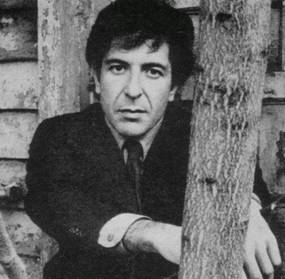
From LOOK Magazine, June 10, 1969. p.92
The Métis “MAY tee” peoples of Canada are one of three aboriginal peoples recognized in Canada . This population group is a cross of European males and Native females. The word Métis means “mixed blood. ”The population was brought on by the fur trade. Another term for the Métis is derived from the Ojibwa (Indians) word wissakodewinmi, which means “half-burnt woodsmen”, describing their lighter complexion in comparison to that of full-blood Indians. The French picked up the translation and often used the term Bois Brule, or “burnt-wood” for the Métis. Their homeland consists of the Canadian provinces of British Columbia , Alberta , Saskatchewan , Manitoba , and Ontario , as well as the Northwest Territories . The Métis also live in the northern United States of Montana, North Dakota , and Minnesota . Their history dates to the mid seventeenth century. Many Métis spoke a mixed language called Michif. Today they speak mostly English and French. The Métis should be recognized as Canada ‘s Aboriginal people. They are the only nation of Aboriginal people indigenous to the formation of Canada . They are the true spirit of Canada and a huge source of Canadian identity. The Métis’ struggle for recognition and protection of their rights is the history of Canada .
Every phase of Canadian history touched upon the Métis and in turn, the Métis left their mark on most major historical events:
- The rivalry between France and Britain for mastery of the continent
- The struggle of the Catholic Church for a place in a Protestant country
- The battle between rival groups for dominance of the fur trade in Western Canada
- The 1870 and 1885 rebellions and growth of settlement in the Prairie Provinces
- The formation of the Province of Manitoba
- The formation of the world famous Royal Canadian Mounted Police
- Arising again during the devastating years of the Great Depression on the Canadian Prairies
- The campaign for a new constitution in the 1980’s.
Sidney Crosby (Kendra Davis, 2009)

Sidney Crosby, b. 1987 in Cole Harbour, Nova Scotia (a suburb of Halifax), is currently the captain of the Pittsburgh Penguins of the National Hockey League. He was the first pick in the 2005 NHL draft, and at only 19 years old became the youngest team captain in NHL history, surpassing the record held by Tampa Bay’s Vincent Lecavalier by one month. Considered by many to be the “face of the NHL” (seriously, it even appears to be trademarked: http://shop.nhl.com/product/index.jsp?productId=3231950), Crosby is arguably the most recognizable player in the league alongside the Washington Capitals’ Alexander Ovechkin. Prior to being drafted by the Penguins, he played for the Rimouski Oceanic of the Quebec Major Junior Hockey League, and is expected to be a focal member of Canada’s Vancouver 2010 Olympic team. He led the Penguins to the Stanley Cup final versus Detroit in both 2008 and 2009, and became the youngest captain to ever win the Cup during the latter season.
http://penguins.nhl.com/team/app?page=PlayerDetail&playerId=8471675&service=page&tab=bio
Nunavut (Pardis Delijani, 2009)
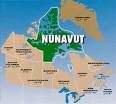
Nunavut is the least populated and the geographically largest of the provinces and territories of Canada . The majority of the inhabitants are Inuit. Nunavut in the Inuktitut language means “our land”. The actual border was established in 1993 when Nunavut was officially separated from the Northwest Territories . On April 1, 1999 , as a result of the Nunavut Act and the Nunavut Land Claims Agreement Act, it became separate territory of Canada . Nunavut is the fifth-largest subdivision in the world and includes a major portion of Northern Canada and most of the Canadian Arctic Archipelago.
The Indian Act 1876 (Tracy Evans, 2009) : a Canadian federal statute that was originally designed to consolidate the many different laws concerning Native peoples in the late 1800s. Despite frequent controversy, the Act is still in place today and has been revised multiple times.
It is important to understand the historical context in which the Indian Act was first drafted and the events leading up to its creation. Preceding the Indian Act by almost 20 years, The Civilization of Indian Tribes Act of 1858 made it clear that Parliament’s ultimate goal was to assimilate Native Americans into the European settlers’ culture and laws and were only to protect Natives until they were “sufficiently advanced education-wise of managing their own affairs”. Some people still believe this is the ongoing agenda of the Canadian government. The legal process of taking away Native status in order to assimilate them into mainstream society was called enfranchisement. It could be done in a number of different ways: either by choice – by renouncing and ultimately losing their culture and all rights associated with that culture in order to gain the right to vote – by leaving their reservation, or (for women) by marrying a non-native man. Children born to these couples lost their Native status. Men, on the other hand, could marry non-Indian women and were allowed to keep their Native status which was extended to their new spouses. Enfranchisement began with the Gradual Enfranchisement of Indians Act in 1869. and was later enforced under the Indian Act between 1920 -1922 and 1933-1951.
Enter Indian Act in 1876, which focused on defining Indian status (which is still Canada ‘s legal definition of “Indian”), organizing local Indian governments, and managing reserve land and communal monies. Under this Act, Aboriginal people were defined in a number of ways:
Status Indians : were those who were initially registered by government-appointed Indian Agents. However, their records were widely inaccurate.
Non-status Indians : were those who had not been registered, and therefore lost their legal status while keeping their identity.
Treaty Indians : belong to a First Nation that has signed a treaty with The Crown. Treaties generally designated land for reserves and allotted hunting rights.
Indian Agents took the place of Aboriginal leaders. In 1886 the Sun Dance and Potlatch ceremonies were banned in British Columbia but later reauthorized in 1951. In this revision, the ban on raising money for political purposes was also lifted, liquor was allowed to be consumed in public, and Inuits were excluded from the Act.)
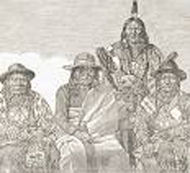
A final revision in 1985 through Bill C-31 removed the enfranchisement provisions, giving status back to women and children who had lost it. In 2003 there were over 719,000 status Indians, 14,000 of which gained their status through Bill C-31. The legal status and definition of “Indian” is important in Canada because the Constitution Act of 1982 (Section 35) separates the aboriginal peoples of Canada into three groups: Indians, Inuits, and Métis peoples, all of which have different legal rights. The Indian Act focuses primarily on Indian monies and lands or reserves and is regulated by the Ministry of Indian Affairs.
Compare this definition to the “Indian Act” entry in the online Canadian Encyclopedia ( www.thecanadianencyclopedia.com ) to see how history rewrites itself.
The James Bay Project (Julie Sirois, 2009)
On April 30, 1971, Robert Bourassa, Québec premier, announced a plan to deliver cheap hydro-electric power to the province. The plan was intended to financially assist the citizens of Quebec by lowering the price of energy, thereby stimulating the economy and creating new jobs. This project would harness the great power of the northern rivers. Dams would be built, but they would irrevocably change the geological region by flooding the land and shifting the natural river patterns. People and wildlife would be severely affected.
The Cree and Inuit, native peoples of northern Canada, joined forces to fight the degrading of their land and rights. A heated debate between the Cree, the Inuit and the Canadian Government ensued. Finally, on November 11, 1975, the Cree and Inuit traded their claim to land in some areas of northern Quebec in exchange for $225 million dollars. This agreement is called the Northern Québec Agreement. It acknowledges special hunting and fishing rights for the natives and provides the natives an opportunity to govern themselves.
After thirteen years of construction, The James Bay project is finished and the dams of northern Canada have been built. As expected, the natives suffer from polluted water, the loss of land, and other changes. For Canada and Québec, cheap hydropower has been achieved.
Haudenosaunee , the “People of the Longhouse” (Elaine Sweet, 2011)
Haudenosaunee are the “People of the Longhouse,” members of Iroquois tribes in Northern America. These tribes were also known as the Five Nations.
Cayugas
Onondagas (Central Fire)
Oneidas
Mohawks (Eastern Door)
 The league was the strongest united group of Amerindian nations. The reference to the longhouse is generated by their traditional habitat, the longhouse. Their territory as seen in the map above also reflects the structure of the longhouse, a symbol all of the nations coming together as one and living in harmony. Their spirituality is also shared by all nations. It is based on giving thanks and expressing respect to all living things in their ceremonies. In 1720 the League became the Six Nations when Tuscaroras was added to the longhouse.
The league was the strongest united group of Amerindian nations. The reference to the longhouse is generated by their traditional habitat, the longhouse. Their territory as seen in the map above also reflects the structure of the longhouse, a symbol all of the nations coming together as one and living in harmony. Their spirituality is also shared by all nations. It is based on giving thanks and expressing respect to all living things in their ceremonies. In 1720 the League became the Six Nations when Tuscaroras was added to the longhouse.
Sources and additional information:
http://www.haudenosauneeconfederacy.ca/
http://en.wikipedia.org/wiki/Iroquois
 Cape Spear (Erin Haggerty, 2011)
Cape Spear (Erin Haggerty, 2011)
Cape Spear is the most easterly place in North America. It is located in Newfoundland and is a national historic site due to the location of the oldest surviving lighthouse in both Labrador and Newfoundland. The cape has many hiking trails on which a visitor is able to view a plethora of wildlife.
 Throughout World War II, Cape Spear was fortified and used by the allies to protect the entrance to St. John’s Harbor. Two, ten inch guns were posted although they only saw action once during the war when facing a German U-boat which threatened the harbor by firing several torpedoes; no serious damage resulted.
Throughout World War II, Cape Spear was fortified and used by the allies to protect the entrance to St. John’s Harbor. Two, ten inch guns were posted although they only saw action once during the war when facing a German U-boat which threatened the harbor by firing several torpedoes; no serious damage resulted.
The historic lighthouse was built in 1810 to assist and guide boats off the coast. It has since been restored with original furnishings and pictures of past lightkeepers and their families. Tours are available for visitors interested in learning about the cape and the lighthouse.
Information found on:
http://www.pc.gc.ca/lhn-nhs/nl/spear/index.aspx
http://blog.travelpod.com/travel-blog-entries/flyin_bayman/st_johns/1063458780/tpod.html
http://www.tourcanada.com/capspear.html
Bison use (Erin Haggerty, 2011)
Living in the harsh northern Canadian climate made it often necessary for the Inuit and First Nation People who depended on the environment to live in extremely efficient ways; in particular with the use of the animals that they hunted and killed. There are many ways in which different parts of a bison have been utilized over the years to assist northern Candaian cultures. The  bones were used as scrapers, knives, needles and sled runners, and the hide for clothing material, shields, blankets, floor coverings and saddle bags. The main body of the animal used to be partitioned so that the bladder could be used as waterproof bags, the meat as food, the horns as cups, spoons, clubs, and sleigh runners. The blood could be used within the intestine casing to make a type of sausage.
bones were used as scrapers, knives, needles and sled runners, and the hide for clothing material, shields, blankets, floor coverings and saddle bags. The main body of the animal used to be partitioned so that the bladder could be used as waterproof bags, the meat as food, the horns as cups, spoons, clubs, and sleigh runners. The blood could be used within the intestine casing to make a type of sausage.
Both the brain and the liver were used to tan hides.
http://www.nationsonline.org/oneworld/native_americans.html
http://www.ecokids.ca/pub/eco_info/topics/first_nations_inuit/food.cfm
King Philip’s War, 1675-1676 (Eileen McKinney, 2011)
 King Phillip’s war has been said to be the most devastating war between the Colonists and Natives to this day in New England. King Philip was the son of Massasoit and chief of the Wampanoag tribe. He helped the newcomers make it through the winter and become accustomed to a new way of life. Although he helped establish relationships with the Colonists, the tribes lost land due to Colonial expansion, which quickly created agitation. Those tensions were caused by the steady succession of land sales forced on the Native Americans by their growing dependence on English goods. To make matters even worse, three tribe members were tried and executed by the English for the murder of a Wampanoag man who had joined the English community. This event caused even more hostility between the two groups. Starting in June of 1675, the Wampanoag started to attack colonial settlements and taking the lives of men, women, and children. The English retaliated with attacks that destroyed native villages and by killing natives themselves. In April of 1976, the Narragansett who had joined to help the Wampanoag were defeated and their chief was killed. Shortly thereafter, Philip was captured and killed. His head was severed and put on a stick which was then paraded around Plymouth Colony.
King Phillip’s war has been said to be the most devastating war between the Colonists and Natives to this day in New England. King Philip was the son of Massasoit and chief of the Wampanoag tribe. He helped the newcomers make it through the winter and become accustomed to a new way of life. Although he helped establish relationships with the Colonists, the tribes lost land due to Colonial expansion, which quickly created agitation. Those tensions were caused by the steady succession of land sales forced on the Native Americans by their growing dependence on English goods. To make matters even worse, three tribe members were tried and executed by the English for the murder of a Wampanoag man who had joined the English community. This event caused even more hostility between the two groups. Starting in June of 1675, the Wampanoag started to attack colonial settlements and taking the lives of men, women, and children. The English retaliated with attacks that destroyed native villages and by killing natives themselves. In April of 1976, the Narragansett who had joined to help the Wampanoag were defeated and their chief was killed. Shortly thereafter, Philip was captured and killed. His head was severed and put on a stick which was then paraded around Plymouth Colony.
http://www.u-s-history.com/pages/h578.html
http://www.infoplease.com/ce6/history/A0827703.html
 Quiet Revolution, 1960s (Eileen McKinney, 2011)
Quiet Revolution, 1960s (Eileen McKinney, 2011)
Prior to the 1960s, conservative Maurice Duplessis, leader of the Union National Party, controlled the government of Québec. He had focused on isolation, social conservatism and had a generally negative autonomist stand which created a great deal of strain on Québec. After his death, the Quiet Revolution was inevitable and brought about a period of rapid change and intense transformation in the province of Québec. It led to the creation of several reforms that changed Québec’s condition profoundly and caused a redefinition of Quebec’s role within the Confederation. The government of Québec created a hospitalization scheme, a Cultural Affairs and Federal-Provincial Relations department, , a Department of Education, the Société Générale de Financement, and advocated the nationalization of all private hydro-electric facilities. It seemed to many that the number of reforms were extensive and that they were going to continue to be proposed. In order to fund all these new initiatives, Jean Lesage, the new leader who replaced Deplessis, raised taxes, duties, and license fees in Québec, which made Québec’s income tax rate the third highest province in the country. By no means was it a cheap time or place to live. But in the end, the changes produces a surge in nationalism within Québec that persists today.
http://faculty.marianopolis.edu/c.belanger/quebechistory/readings/lesage.htm
http://en.wikipedia.org/wiki/Quiet_Revolution
 Ogdensburg Agreement 1940 (Eileen McKinney, 2011)
Ogdensburg Agreement 1940 (Eileen McKinney, 2011)
The Ogdensburg Agreement was signed on August 17, 1940, by Prime Minister Mackenzie King of Canada and United States President Franklin Roosevelt. For the longest time, Canada had been in close relations with Great Britain and deemed them as their primary military partner. Even though Canada was not a part of Great Britain because of its independent status, it still had close ties with that country, making relations with the United States seem unnecessary. Shortly after the start of World War II, Canada declared war on Germany and the United States remained neutral. But as the war raged on, it was clear that the Germans had a very strong army and that Canada was quickly running out of supplies. Roosevelt, President of the United States feared that if Great Britain fell to Germany, an attack on North America would ensue. Aware of the possible threats, both Canada and the U.S. decided to work together to come up with a plan to create a board which would oversee the defense of both nations. On August 17, Roosevelt and King met in the border town of Ogdensburg, New York and signed an agreement which improved relations between the two nations and helped protect both countries from outside threats such as were made by the Germans.
http://en.wikipedia.org/wiki/Mackenzie_King
http://ehistory.osu.edu/osu/mmh/arctic-sovereignty/ogdensburg.cfm
LESTER PEARSON (Erin Haggerty, 2011)
 Lester Pearson was born in Toronto on April 23, 1897. He volunteered during WWI with a hospital unit, transferring later into the Royal Flying Corps. After being injured twice, hewas sent back to Canada and continued to train until the end of the war. He graduated from the University of Toronto in 1919 and then enrolled at Oxford University where he graduated with bachelor and master degrees in history. In 1928 Pearson became First Secretary in the Canadian Department of External Affairs. In this position he participated in 2 London Naval Conferences, the Hague Conference on Codification of International Law, the Geneva World Disarmament Conference and in numerous sessions with the League of Nations.
Lester Pearson was born in Toronto on April 23, 1897. He volunteered during WWI with a hospital unit, transferring later into the Royal Flying Corps. After being injured twice, hewas sent back to Canada and continued to train until the end of the war. He graduated from the University of Toronto in 1919 and then enrolled at Oxford University where he graduated with bachelor and master degrees in history. In 1928 Pearson became First Secretary in the Canadian Department of External Affairs. In this position he participated in 2 London Naval Conferences, the Hague Conference on Codification of International Law, the Geneva World Disarmament Conference and in numerous sessions with the League of Nations.
From 1935 to 1946, Pearson advanced through the following positions: he was part of the office of the High Commissioner for Canada in London, Assistant Undersecretary of State for External Affairs in Ottawa, Minister-Counselor at the Canadian Legation in Washington, D.C, and later Minister Plenipotentiary, and Ambassador. He helped to establish the UNRRA and the FAO.
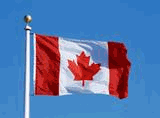 Pearson wrote the NATO proposal speech for Prime Minister St. Laurent and headed the Canadian division within NATO. He served as Chairman of the NATO Council from 1951 to 1952. He made it possible to create the independent state of Israel in 1947 as Chairman of the General Assembly’s Special Committee on Palestine. Pearson won the Nobel Peace Prize in 1957 for his proposal of an emergency UN peacekeeping intervention to resolve the Suez Crisis.
Pearson wrote the NATO proposal speech for Prime Minister St. Laurent and headed the Canadian division within NATO. He served as Chairman of the NATO Council from 1951 to 1952. He made it possible to create the independent state of Israel in 1947 as Chairman of the General Assembly’s Special Committee on Palestine. Pearson won the Nobel Peace Prize in 1957 for his proposal of an emergency UN peacekeeping intervention to resolve the Suez Crisis.
He became prime minister as head of the Liberal Party in 1963 and supported and maintained a bipartisan foreign policy. Within Canada, he introduced policies implementing and financially supporting pensions, universal medical care, and education. He created a new Canadian Immigration Act and a Royal Commission on Bilingualism and Biculturalism. During his time of leadership a new national flag was created and introduced. He retired in 1968 and died 4 years later.
For more information on Lester Pearson:
http://www.nobelprize.org/nobel_prizes/peace/laureates/1957/pearson-bio.html
http://canadaonline.about.com/cs/primeminister/p/pmpearson.htm
NORAD (Will Hadden-Wyper, 2011)
 The North American Aerospace Defense Command was formed in 1958 by Canada and the United States to provide a blanket of aerospace security and defense throughout the region. It is operated by the Royal Canadian Air Force, the US Air Force, and US Northern Command USNORTHCOM, with bases in Colorado, Cheyenne Mountain and North Bay, Ontario. The necessity for the program was brought on by the onset of the Cold War. Soviet long range nuclear bombers and intercontinental ballistic missiles posed the most direct threat to Canada and the US. Although protected on both Pacific and Atlantic seaboards by naval forces, the arctic was a critical and undefended vulnerability. Leading up to the official signing of NORAD, the two countries implemented several defensive radar lines in Canada. The Pine Tree line was built along the 55th parallel, and the Distant Early Warning (DEW) Line was built farther north on the 69th parallel in 1957. The doctrine and technological advancements of the Cold War however quickly rendered these radar systems obsolete. Nuclear Mutually Assured Destruction dominated US and Canadian Cold War thinking, and, as a result, NORAD became primarily an early warning system with the mission of maintaining aerospace sovereignty during peacetime. The DEW line was replaced by an over-the -horizon radar system in 1979. Gradually, fighter aircraft from each country designated to NORAD command were replaced by aircraft with powerful early warning radars as opposed to armaments. After 9/11 NORAD became vital yet again with the mission of protecting North American airspace from terrorist threats. Aircraft were deployed to monitor air traffic and as armed patrols should the need to intercept a terrorist threat arise. In 2006 NORAD was consolidated and other institutions in Canada and the US have since taken over the missions of aerospace defense. Throughout its operational years since 1957, NORAD provided an important cornerstone of US-Canada relations. Canada played an integral part in the mostly US led defense of North America, and showed that it was willing to work with the US and provide important support on key policy issues.
The North American Aerospace Defense Command was formed in 1958 by Canada and the United States to provide a blanket of aerospace security and defense throughout the region. It is operated by the Royal Canadian Air Force, the US Air Force, and US Northern Command USNORTHCOM, with bases in Colorado, Cheyenne Mountain and North Bay, Ontario. The necessity for the program was brought on by the onset of the Cold War. Soviet long range nuclear bombers and intercontinental ballistic missiles posed the most direct threat to Canada and the US. Although protected on both Pacific and Atlantic seaboards by naval forces, the arctic was a critical and undefended vulnerability. Leading up to the official signing of NORAD, the two countries implemented several defensive radar lines in Canada. The Pine Tree line was built along the 55th parallel, and the Distant Early Warning (DEW) Line was built farther north on the 69th parallel in 1957. The doctrine and technological advancements of the Cold War however quickly rendered these radar systems obsolete. Nuclear Mutually Assured Destruction dominated US and Canadian Cold War thinking, and, as a result, NORAD became primarily an early warning system with the mission of maintaining aerospace sovereignty during peacetime. The DEW line was replaced by an over-the -horizon radar system in 1979. Gradually, fighter aircraft from each country designated to NORAD command were replaced by aircraft with powerful early warning radars as opposed to armaments. After 9/11 NORAD became vital yet again with the mission of protecting North American airspace from terrorist threats. Aircraft were deployed to monitor air traffic and as armed patrols should the need to intercept a terrorist threat arise. In 2006 NORAD was consolidated and other institutions in Canada and the US have since taken over the missions of aerospace defense. Throughout its operational years since 1957, NORAD provided an important cornerstone of US-Canada relations. Canada played an integral part in the mostly US led defense of North America, and showed that it was willing to work with the US and provide important support on key policy issues.
Sources:
http://www.fas.org/nuke/guide/usa/airdef/norad-overview.htm
http://www.norad.mil/about/history.html
http://www.norad.mil/about/index.html
http://www.journal.dnd.ca/vo9/no3/16-book2-livre2-eng.asp
Anne Hébert (Samantha Kringstad, 2011)
 Anne Herbert was a Canadian author and poet. She was born on August 1, 1916 in Quebec and passed away on January 22, 2000. She was a very well-known author and poet who won many literary prizes in Canada and France, including Canada’s top literary honor, the Governor General Award, three times. Her father, Maurice, influenced her when it came to her writing because he was a poet himself. Thanks to his influence, she started writing at a very young age. She struggled for years to get her works published but in 1942 a collection of her poems, Les songes en équilibre, finally appeared. She moved to Paris in 1954 in search of a larger audience and started writing novels, including Kamouraska, her most famous. She came back to Canada in the 1990s. Her last novel, Un habit de lumière, was published in 1999. Along with poetry, novels, and short stories, she wrote plays and movie scripts.
Anne Herbert was a Canadian author and poet. She was born on August 1, 1916 in Quebec and passed away on January 22, 2000. She was a very well-known author and poet who won many literary prizes in Canada and France, including Canada’s top literary honor, the Governor General Award, three times. Her father, Maurice, influenced her when it came to her writing because he was a poet himself. Thanks to his influence, she started writing at a very young age. She struggled for years to get her works published but in 1942 a collection of her poems, Les songes en équilibre, finally appeared. She moved to Paris in 1954 in search of a larger audience and started writing novels, including Kamouraska, her most famous. She came back to Canada in the 1990s. Her last novel, Un habit de lumière, was published in 1999. Along with poetry, novels, and short stories, she wrote plays and movie scripts.
http://en.wikipedia.org/wiki/Anne_Hébert
The October Crisis (Sean Keefe, 2011)
The Front de Libération du Québec (FLQ) was a Québécois nationalist, as well as a Marxist-Leninist terrorist organization. It was influenced by the Front de Libération Nationale (FLN) that fought against French colonialism during the Battle of Algiers. The height of the FLQ’s activity and influence occurred between 1963-1970. The group was well organized and arranged into loosely connected cells. The use of cells was adopted because of their success when utilized by the FLN. The FLQ funded itself by robbing banks and stole dynamite from military and industrial installations.
Throughout its peak, the FLQ was responsible for over 160 violent incidents in which 8 deaths occurred with many injuries on top of that. The use of explosives was prevalent as the group detonated over 95 bombs on both civilian and government targets. On February 13, 1969, the FLQ bombed the Montréal Stock Exchange, wounding 27 people. The FLQ considered the exchange a symbol of Anglophone power over Québec. On September 28, 1969 they bombed the home of the mayor of Montréal.
The major event of the FLQ’s lifetime was the “October Crisis” in 1970. On the 5th of October, the FLQ kidnapped James Cross, a British diplomat. Five days later, another FLQ cell kidnapped Pierre Laporte while he played football with his nephew. Mr. Laporte was the Québec provincial cabinet minister. The FLQ sought to rile resistance among young people at the Université de Montréal. The lawyer of the FLQ urged students at the campus to boycott classes to show support for the terrorist group.
The “October Crisis” was a national event which held the eyes of the nation and others around the world. When Prime Minister Pierre Trudeau was asked by a reporter how far he would go to stop the FLQ he responded, “Just Watch Me”. On October 15th the Québec government voted on what measures should be taken in response. The next day the provincial government, along with the mayor of Montréal, formally requested military assistance. On the same day the vote took place, the Université de Montréal invited separatist groups to speak on campus, including the FLQ. 3,000 supporters were in attendance to listen to Michel Chartrand, an FLQ leader. Chartrand claimed that the FLQ was growing in strength and that there were “more boys ready to shoot members of Parliament than there are policemen”. This was an audacious statement that raised fear among Canadians of a violent insurrection. The national government granted the province’s request and evoked the War Measures Act. Canadian forces were deployed to both Ottawa and Montréal to assist police in providing security and searching for FLQ members. Habeas corpus was suspended and hundreds of suspects were detained without charges.
The day after the War Measures Act was carried out, Pierre Laporte was executed by his kidnappers. Several weeks later, the police raided the safe house of that cell, but three terrorists escaped and only one was arrested. In an effort to save the life of James Cross, the Canadian government granted the kidnappers safe passage to Cuba. Cross was released after two months in captivity.
The “October Crisis” is an important event in the history of the FLQ. Although its tactical objectives were achieved, the outcome was a disaster strategically. The Québécois came together in opposition to the use of violence in achieving political goals. The separatist Parti Québécois, voted in favor of the War Measures Act and gained a great deal of political momentum. The party would subsequently control the provincial government by 1976.
The Great Acadian Expulsion of 1755, Le Grand Dérangement (Amanda Nadeau, 2011)
In the mid-18th century, the politically neutral and culturally flourishing French Acadians were removed from their Acadian homeland; it became known as the Great Expulsion of 1755. Acadians were forced to separate from loved ones and were boarded onto transport vessels, torn from everything that they had worked hard to accomplish, and sent away to an unknown, uncertain life. Many died along the way. Some were stricken with disease, others starved or drowned. Most had completely lost all hope of reuniting with their families or neighbors. With no place to call home and limited choices as to where to settle, they were a lost and scattered population. Not only were the Acadians expelled from their homeland, but they had their entire lives taken away from them, both literally and metaphorically.
Accounts of the Acadian families that were removed are poorly documented. Records could only be found in hidden, personal archives of the survivors themselves since all church records were burned. These Acadians were grouped in generally small numbers, onto boats and sent to communities in New England and along the eastern seabord. Many did not survive the voyage because of the lack of resources, harsh weather, and illness. In some cases, entire boats disappeared at sea; in others, a boat with approximately 200 passengers would only arrive with 150.The mortality rate on these transports was staggering. In one incident, an epidemic of smallpox struck the 417 Acadians aboard the Cornwallis, and 210 died before reaching their destination of South Carolina.
Many historians argue about the appropriate label for this event. Many believe the word “expulsion” is not an appropriate way to describe it, since the British systematically removed them from Nova Scotia, in attempt to wipe out their culture; in which case the word to describe the event would be “ethnic cleansing” or “genocide”. Regardless of what it is called, this event is often times overlooked in history, but was significant in the shaping the diversity of Canadian culture, and also proof of the hardships that many Canadian culture groups had to endure under British rule.
More sources:
John Mack Faragher’s “A Great and Noble Scheme”
http://en.wikipedia.org/wiki/The_Great_Expulsion
 Thomas “Tommy” Douglas (Hilary Hanscom, 2011)
Thomas “Tommy” Douglas (Hilary Hanscom, 2011)
Tommy Douglas, born in 1904 in Scotland (emigated at the age of 6), was a prominent Canadian social democratic politican. He was the leader of the Saskatchewan Cooperative Commonwealth Federation from 1942 until 1961, as well as the Premier of the Saskatchewan province from 1944 until 1961. During his time as the Premier and the leader of the Sasketchewan Cooperative Commonwealth Federation, he was primarily concerned with the creation of a standardized healthcare system. He was the creator of the Medicare program that is now federalized in Canada. Although the program that he envisioned for Medicare was not put into place during his time as the Sasketchewan Premier, the program became active shortly after his retirement in 1962. After his retirement from the Premier position, he became the leader of the New Democratic Party, which was largely in support of his Medicare plan. The program formed in the Sasketchewan Province was so successful that it was later adapted as a country-wide plan that is now known as the Canadian Universal Healthcare System.
http://en.wikipedia.org/wiki/File:TommyDouglas-c1971-crop.jpg
 The Hockey Sweater (Samantha Kringstad, 2011)
The Hockey Sweater (Samantha Kringstad, 2011)
“The Hockey Sweater” was the feature short story of a book by the same name published in French in 1979 by Canadian author Roch Carrier and translated into English the same year. It was made into an animated short film in 1980 and released as The Hockey Sweater in English and Le Chandail in French. Since then, the story has been taught in Canada’s elementary schools and every young Canadian knows it by heart. A fun fact about the impact of this story is that its first two sentences appear on the back side of the Canadian 5 dollar bill. As a boy growing up in rural Canada, Carrier and the other hockey players in town regularly wore sweaters of the Montreal Canadians with number 9 (Maurice Richard’s number) on the back. When the sweater became too small and torn, Roch’s mother mail ordered a new one for him from Eaton’s Department Store in Toronto. She wrote the letter in English because she did not have the skill to do so in English. What she received was a Toronto Maple Leaf sweater rather than a Montreal Canadian sweater. Roch became very upset but his mother insisted that he wear it. When the boy showed up at his hockey game he was not allowed to play. He assumed that the reason was that he was the only player not wearing a Montreal Canadian sweater. When he sees the opportunity to play, he jumps on the ice illegally and is penalized. He proceeds to break his stick and gets sent to the church by the referee, a young curate, to atone for getting angry. Instead, he prays for the moths to eat his sweater.
Sources:
http://en.wikipedia.org/wiki/The_Hockey_Sweater
http://www.collectionscanada.gc.ca/read-up-on-it/015020-6010-e.html
 Canadian Pacific Railway (Erin Haggerty, 2011)
Canadian Pacific Railway (Erin Haggerty, 2011)
The Canadian Pacific Railway is Canada’s first transcontinental railway. It was founded in 1881 and consists in 14,000 miles of track across Canada and into the United States. Even today, It remains as a symbol for Canadian nationalism. It was built between 1881 and 1885 and stretches from eastern Canada to British Columbia. It was the result of a promise by the federal government to BC as an enticement to have the province enter the Confederation in 1871. Prime Minister MacDonald ordered the construction of the railway even though actually building it was very expensive, difficult, and dangerous. The Lack of funding made progress slow as did the lack of workers. Many Chinese and European laborers immigrated to Canada during this time in order to work at building the railway.
Andrew Onderdonk, an engineer from New York, was contracted to build the most difficult part of the railway. The area in question is located in British Colombia and is very mountainous and rocky. Over 17,000 Chinese workers worked for as little as $1.00 a day on this section of the railway during its construction.
 The Canadian Pacific functioned for years as the only mode of transportation that could take passengers across the continent. It was instrumental in the development and settlement of Western Canada. A beaver is the logo of the railway and is said to represent the strong work ethic that both the rail company and a beaver possesses.
The Canadian Pacific functioned for years as the only mode of transportation that could take passengers across the continent. It was instrumental in the development and settlement of Western Canada. A beaver is the logo of the railway and is said to represent the strong work ethic that both the rail company and a beaver possesses.
For more sources:
http://www.collectionscanada.gc.ca/settlement/kids/021013-2031.3-e.html
http://www.thecanadianencyclopedia.com/customcode/Media.cfm?Params=A3railway.swf
 Tom Thomson (Erin Haggerty, 2011)
Tom Thomson (Erin Haggerty, 2011)
Thomas Thomson was born on August 5, 1877 and died on July 8, 1917. He was an influential Canadian artist. The Group of Seven, a revered group of painters who came together after Thomson’s death, were heavily influenced by his works and his style of painting. He painted with broad brush strokes and liberally applied paint in order to capture the rugged, untamed natural scenery and textures of his main muse; Canada’s wilderness.
Thomson tried to volunteer to fight for Canada in the Second Boer War but was refused entry because of a medical condition. He went to a business college for only 8 months before he dropped out to join his brother in Seattle, Washington. He was most influenced by Canada’s wilderness, especially Ontario’s. His first piece was exhibited in 1913 by the National Gallery of Canada. Besides painting he also worked as a fire fighter, guide, and ranger for the Algonquin Park, which is where he found much of his inspiration.
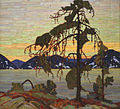 Thomson’s artistic style and talent was mostly self-taught. At a young age he began to paint and draw but it wasn’t until 1912 that he began to paint more seriously. Because he was largely inspired by the natural world, he needed to be able to have easily portable materials on which to sketch. He and other painters who had similar interests would carry into the wilderness small rectangular panels on which to sketch and, from 1912 to 1917, he produced hundreds of drawings, many of which were never translated into paintings. Some of his sketches are now valued art pieces and are on exhibit in the Art Gallery of Ontario and the National Gallery of Canada. (Painting: The Jack Pine. Painted by Thomson in 1916-1917)
Thomson’s artistic style and talent was mostly self-taught. At a young age he began to paint and draw but it wasn’t until 1912 that he began to paint more seriously. Because he was largely inspired by the natural world, he needed to be able to have easily portable materials on which to sketch. He and other painters who had similar interests would carry into the wilderness small rectangular panels on which to sketch and, from 1912 to 1917, he produced hundreds of drawings, many of which were never translated into paintings. Some of his sketches are now valued art pieces and are on exhibit in the Art Gallery of Ontario and the National Gallery of Canada. (Painting: The Jack Pine. Painted by Thomson in 1916-1917)
Thomson died at the age of forty in a freak drowning during a solo canoeing trip in Algonquin Park. Rumors and theories have been concocted concerning his mysterious death, the craziest being a theory that his neighbor secretly murdered him. His body is buried in his family’s plot.
For more Resources:
http://www.artcyclopedia.com/artists/thomson_tom.html
http://www.tomthomson.org/
National Gallery of Canada (Amber Makela, 2011)
The National Gallery of Canada, the largest art gallery in Canada, opened on Parliament Hill in 1988 in Ottawa, Ontario. The building was designed by Moshe Safdie and its construction was overseen by Jean Sutherland Boggs. The current museum director is Marc Mayer.
The first gallery was first commissioned in 1880 by Governor General John Douglas Sutherland Campbell. The collection has been moved to five different locations since then, including the Victoria Memorial Museum and the Supreme Court Building.
The collection includes paintings, drawings, sculptures, and photographs. The art is both contemporary and non-contemporary and includes art by Canadian, as well as American, European, Native, and Inuit artists. The largest work in the gallery is the interior of the Rideau Street Chapel. The entrance is adorned by a statue of Louise Bourgeois’ Maman.
 The Seven Years War (Brandon Harriman, 2012)
The Seven Years War (Brandon Harriman, 2012)
The Seven Years War is also known as the French and Indian War in the U.S. and the War of the Conquest in French Canada. It was part of a much larger war, fought in Europe, India, Africa, and The Americas from 1756 to 1763. It was driven by the desire of the English and French to dominate colonial trade in North America and the Caribbean. Overseas, the conflict was over the rise of King Frederick II of Prussia who had conquered part of Austria eight years earlier. France and other nations allied with Austria to defeat King Frederick while Great Britain allied with Prussia.
The war in North America began a year earlier in 1755 when British forces, led by George Washington, unsuccessfully attacked French Fort Duquesne. The French were aided by many First Nations tribes including three bands of Mohawk, two of Abenaki, the Huron and the Onondaga, which is where the conflict got its name. The Iroquois sided with the British. The British also captured French ships and troops that year. Next, the Battle of Beausejour resulted in the deportation of the Acadian people. There were several more battles over the years, of which the French won a handful, but the British were eventually victorious. As a Result, France lost all control over its territories in North America.
http://en.wikipedia.org/wiki/Battle_of_Beausejour
Little Canada, ME (Eric Michaud 2012)

-Bates Mill and the Canal-
The U.S – Canada Border (Matthew Pellerin 2012)
The U.S – Canada border is considered to be the largest peaceful border in the world, with 5,525 miles of designated separation. Officially known as the International Boundary, it is Canada’s only land boundary with the exception of a small contented border along Hans Island which it shares with Denmark.
The establishment of this border occurred over a lengthy period of time since many different factors had to be considered along the way. Final agreement on the border between Canada and the U.S. was reached in 1903 and, in 1925, the International Boundary Commission (IBC) became the permanent organization responsible for the surveying and mapping of this boundary established along the 45th parallel and the 49th parallel.
Since the establishment of this boundary, border crossings and patrols have been established along the 5,525 miles. There are currently 119 borders crossings through which approximately 400,000 people pass each day, be it for commercial or personal use. The establishment of a secure border with our neighbor to the north has allowed friendly neighbors to move between countries with a minimum of disruption.
Seigneurial System (Britni Hutchinson 2012)
The Seigneurial Settlement System was a way of distributing agricultural land in which each farmer was allowed access to the river.
Access to the river made irrigation easier and allowed more people a better opportunity to trade. In order to do this, the lots were long and narrow, with the narrow side bordering the water.
This system was first set into place in Canada in 1627 and lasted 227 years before it was abolished. (The Canadian Encyclopedia) The method was “inspired by the feudal system” and used to “promote settlement in a systematic way” (The Canadian Encyclopedia). A group of these lots would be owned by an aristocrat, or seigneur, who would in turn give the land to dependent tenants.
The system created a sense of community in the early Québec settlements and endured through the change of power from France to Great Britain. At first it seemed to be a great way of allowing many people access to the wealth, however as time passed “the seigneurial system increasingly appeared to favour the privileged and to hinder economic development. After much political agitation it was abolished in 1854 by a law that permitted tenants to claim rights to their land.” (The Canadian Encyclopedia).
REFERENCE:
Mathieu, Jacques. Seigneurial System. The Canadian Encyclopedia, 2012. http://www.thecanadianencyclopedia.com/articles/seigneurial-system
A potlatch is a “party” that First Nations people of power hold for a multitude of reasons. Potlatches can be to celebrate a birth, death, marriage; they can be a way to demonstrate power, status and wealth. During a potlatch, many people gather to celebrate and to give their wealth in the form of money, art, and food to others. This magnanimity shows the power of individuals in the clan and proves that they can give numerous and valuable gifts while maintaining their own well-being.
In 1885 the potlatch was made illegal in Canada. The government felt that the distribution of wealth among the clan was anti-capitalist and banned the ceremony. It continued illegally in many tribes and eventually was allowed to regain its legal status when the government felt the need to apologize to the First Nations for the poor treatment of tribes in earlier times.
REFERENCE:
Professor Brian Robinson, Canada’s Native People. CAN 101 Lecture, 13 September, 2012.
Grand Pré (Jordan Orrell 2012)
Recognized as a National Historic Site of Canada, in Nova Scotia, Grand Pre (Nova Scotia) has a long historical background since it was settled by the Acadians in the early 1600’s. When Great Britain took control of the region in 1713, the government feared that the Acadians would side with the French in its ongoing struggle for domination of North America. With the Seven Years’ War (French and Indian War) looming, the British decided to deport the Acadians and sent them south to the thirteen British colonies, many of whom ended up in the French colony of New Orleans. The French who fled either went north or as far west as New France. After the conflict ended, the British granted their land to New Englanders who moved up from the eastern states to farm the rich Acadian lands. By the time the Acadians could return to resettle their former lands, their settlements were unavailable.
One of the main areas of the deportation has been identified as Grand Pré, a major Acadian settlement throughout the seventeenth and eighteenth centuries. For that reason, a memorial was built in honor of the Acadian people and it was made a National Historic Site in 1961.
NATO stands for National Atlantic Treaty Organization. Its goal is to ensure the freedom and security of all the members through political and the military means. It was signed on April 4th 1949. Its headquarters are in Brussels, Belgium and there are 28 members from throughout Europe and North America; Croatia ad Albania being the most recent members. The military spending of all of NATO members combined makes up 70 percent of the world’s defense spending. NATO protects against a number of threats including weapons of mass destruction, ballistic missile technologies, cyber attacks, and terrorism. NATO has helped protect civilians from government repression and is developing newer and more effective techniques in that area of interventions. It is currently working to recruit more members and to create a larger, worldwide alliance.
Sources:
http://www.nato.int/welcome/brochure_WhatIsNATO_en.pdf
http://en.wikipedia.org/wiki/NATO
July 1st 1867 marks the most monumental day in Canadian history, Canada day, also known as Dominion Day. On this day in 1867, Canada gained its independence from Great Britain by concluding the British North America Act. Three provinces were united: Nova Scotia, New Brunswick and Quebec, which included modern day Ontario. With the original passing of the British North America Act, these provinces banded together to become known as the Dominion of Canada, and chose July 1st as Dominion Day. 115 years later, in 1982, modern day Canada passed the Canada Act which gave Canadians even greater independence. Minimal ties remain with Great Britain, including its ties to the monarchy. Dominion Day reflected that change by being renamed Canada Day.
Canada Day is celebrated all over the country, as well as by internationally recognized Canadians. Events are largely held outdoors and include parades, concerts, carnivals, fireworks and even citizenship ceremonies. The typical image of Canada Day is quite similar to Independence Day in the United States; the Canadian flag, consisting of two red vertical stripes separated by a white stripe containing a red maple leaf, is displayed everywhere. The maple leaf is Canada’s national symbol and represents the country’s distinct involvement with nature and the environment since the 18th century. The red and white Canadian flag proudly flies all over the nation on Canada Day and is a tribute to the country’s independence.
References:
http://timeanddate.com/holidays/canada/canada-day
http://en.wikipedia.org/wiki/Canada_Day
http://en.wikipedia.org/wiki/Flag_of_Canada
Prince Edward Island (Shane Albert 2012)
Prince Edward Island or PEI for short is considered the birthplace of Confederation. This is because thousands of years ago early Europeans settled on this deserted island and founded the city of Charlottetown. A group of elected officials met there and came up with an idea to unite three different maritime jurisdictions into one large union. The idea of a Canadian confederation was therefore forged at the Charlottetown Conference, making Prince Edward Island the rightful birthplace of Canada.
Early Europeans came to PEI in the 16th century but early archeological evidence suggests that small fishing and hunting camps built by natives were there long before then. Jacques Cartier, a French explorer claimed the island for France in 1534 and in 1603 it was named Ile St. Jean by Samuel de Champlain. From 1713-1715 there were intense negotiations about how the land would be partitioned until the treaty of Utrecht was signed. It placed Nova Scotia under Great Britain’s rule, which forced many Acadians to move to PEI in order to remain under French rule.
In 1758, the French and Indian war broke out and the British occupied the island. The Acadians were exiled and the island became known as St. John. Lumbering and ship building were the primary industries of the island and in 1867. PEI was a stable place to live until the lumbering era came to an end, causing population growth to stagnate. PEI joined the Canadian Confederation in 1873, making it a part of Canada.
References:
http://www.gov.pe.ca/infopei/index.php3?number=19665&lang=E
http://www.tourismpei.com/history-of-pei
http://history.howstuffworks.com/canadian-history/history-of-prince-edward-island.htm








